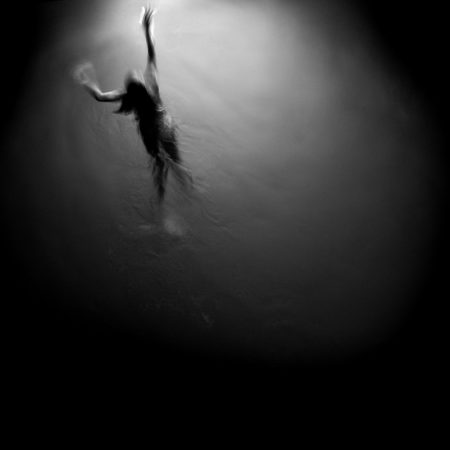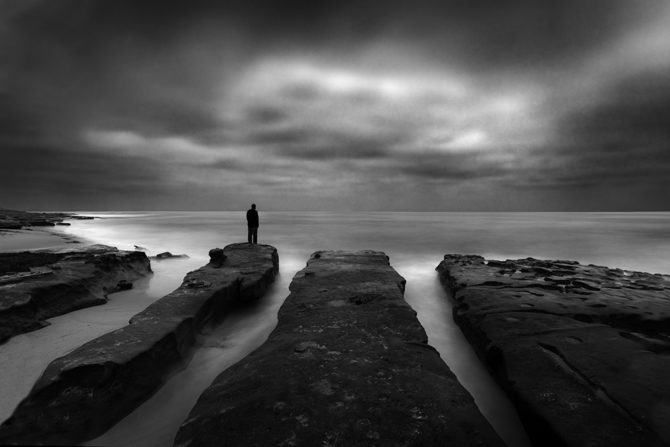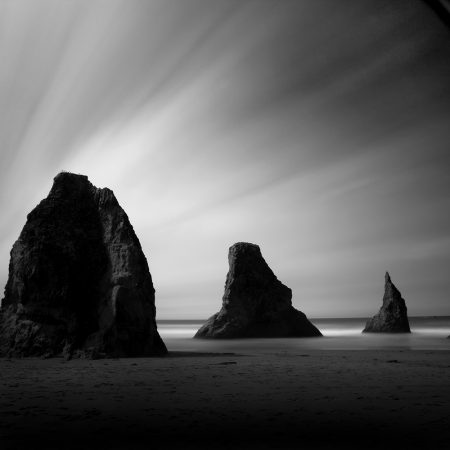Tag: vision
June 14, 2014
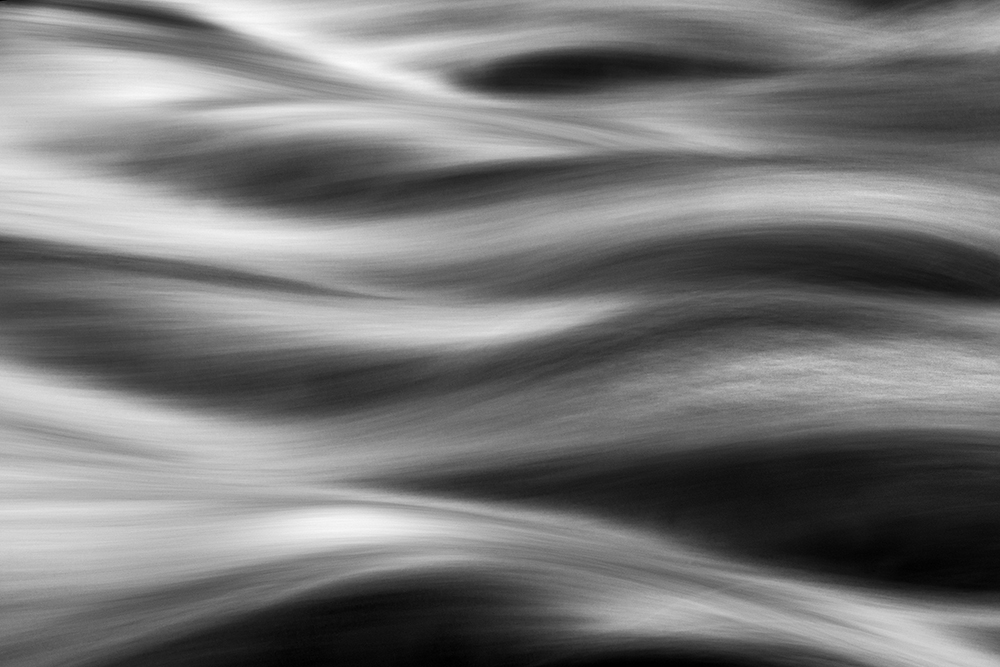
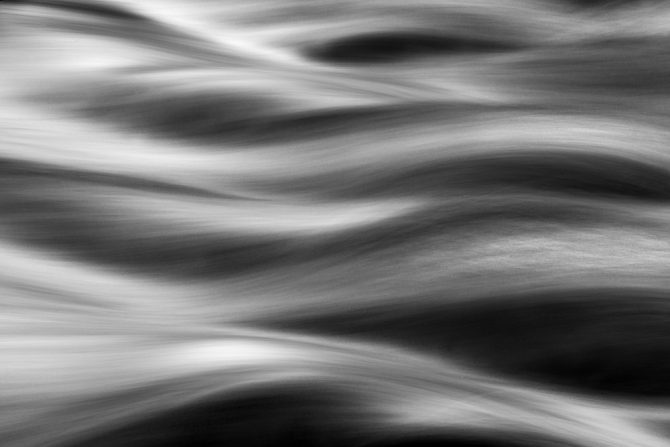
I have been thinking about two words lately: visualize and previsualize. What do they mean and how are they different?
I’ve used both words to describe my creative process and yet I’m not really sure if I’m visualizing or previsualizing?
So I looked them up in the dictionary:
Visualize: form a mental image of; imagine.
Previsualize: The word you’ve entered isn’t in the dictionary.
Hmmmm…so previsualize is not a “real” word?
I then turned to the ultimate authority of the universe (Wikipedia) to see what I could learn about previsualization. Here is what I found:
Visualization is a central topic in Ansel Adams‘ writings about photography, where he defines it as “the ability to anticipate a finished image before making the exposure”.
The term previsualization has been attributed to Minor White who divided visualization into previsualization, referring to visualization while studying the subject; and postvisualization, referring to remembering the visualized image at printing time.
However, White himself said that he learned the idea, which he called a “psychological concept” from Ansel Adams and Edward Weston.
According to Adams and White, visualization and previsualization are the same and this process takes place before the exposure.
This has been my experience, that visualization takes place before the exposure. When I’m looking at the subject I can literally see the final image in my “mind’s eye.”
This Vision typically comes quickly and definitively and it guides me during the shot and the processing, helping me transform the captured image into to that visualized image. There is no question as to what the final image will look like, it is burned into my memory.
Inspiration may come after the exposure and during processing, but that would not be visualization according to Adams or previsualization according to White’s thinking.
I’m grateful for the inspiration whenever it may come, but I do find it most useful when it comes before the exposure.
What has your experience been with visualization or previsualization?
Cole
May 9, 2014
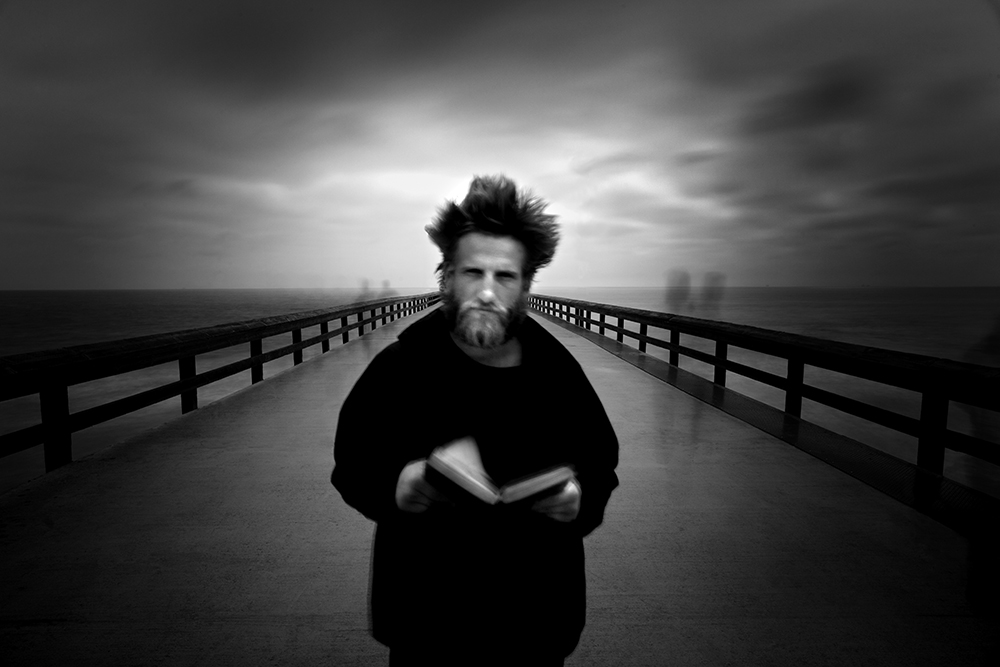
The Angel Gabriel
Why do I focus on Vision so much? It’s because I believe that Vision is what makes an image great. It’s what makes the difference between a technically perfect image and one with feeling. It’s what makes your images unique.
Great images do not come about because of equipment and processes, but rather from Vision that drives these tools to do wonderful things. What good are great technical skills if you don’t have an idea worthy of them?
If I had to choose between the best equipment in the world and no Vision or having a Kodak Brownie and my Vision…
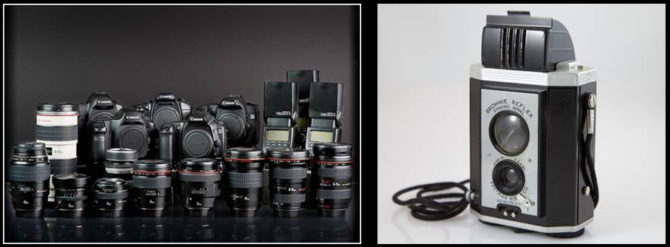
I’d take the Brownie.
A lot of people ask: “How do I go about finding my Vision?” I’m not sure I can answer that for everyone, but here is how I discovered mine:
The Wake-Up Call
Several years ago I was attending Review Santa Fe where over the course of a day my work was evaluated by a number of gallery owners, curators, publishers and “experts” in the field.
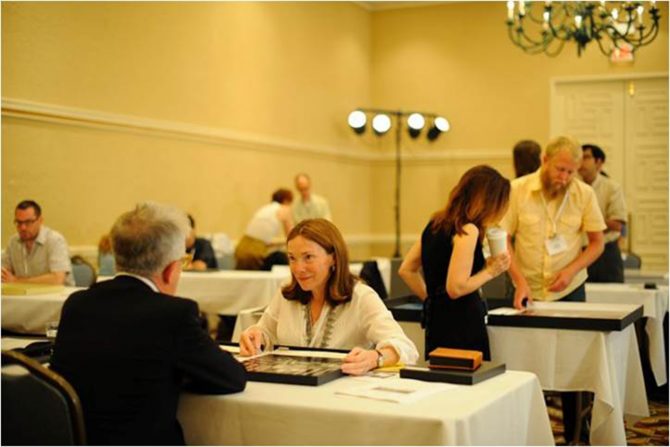
During the last review of a very long day, the reviewer quickly looked at my work, brusquely pushed it back to me and said “It looks like you’re trying to copy Ansel Adams.” I replied that I was, because I loved his work! He then said something that would change my life:
“Ansel’s already done Ansel and you’re not going to do him any better. What can you create that shows your unique vision?”
Those words really stung, but over the next two years the message did sink in: Was it my life’s ambition to be known as the world’s best Ansel Adams imitator? Had I no higher aspirations than that?
I desperately wanted to know if I had a Vision, but there was a huge problem: what exactly was Vision and how did I develop it?
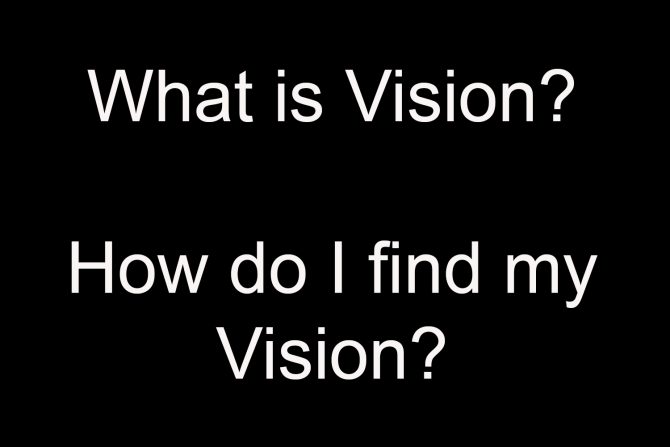
I researched Vision but I couldn’t relate to the definitions and explanations that I found. Was it a look, a style or a technique? Was it something you were born with or something you developed?
And then there was the nagging doubt: what if I didn’t have a Vision? I feared that it was something you either “had” or you “didn’t have” and perhaps I did not?
And how was I to go about finding my Vision?
With so many unanswered questions and with no idea on how to proceed, I simply forged ahead with what made sense to me. Here is what I did:
1. Sort Your Portfolio
I took 100 of my best images, printed them out and then divided them into two groups: the ones I REALLY loved…and all the rest. I decided that the ones that went in the “loved” pile had to be images that “I” loved, and not just ones that I was attached to because they had received a lot praise, won awards or sold the best. And if I loved an image and nobody else did, I still picked it.
2. Make the Commitment
I committed that from that point on, I would only pursue those kinds of images, the ones that I really loved. Too often I had been sidetracked when I chose to pursue images simply because others liked them.
3. Practice Photographic Celibacy
I started practicing Photographic Celibacy and stopped looking at other photographer’s work. I reasoned that to find my Vision, I had to stop immersing myself in the Vision and images of others.
I used to spend hours and hours looking at other photographer’s work and would find myself copying their style or even their specific images. I knew that I couldn’t wipe the blackboard of my mind clean of those images, but I could certainly stop focusing on their Vision and instead focus on mine.
When I looked at a scene I didn’t want to see it through another photographer’s eyes, I wanted to see it through mine!
4. Simplify Your Processes
I embarked on a mission to simplify my photography. In the past I had focused on the technical and now I was going to focus on the creative. I disposed of everything that was not necessary: extra equipment, gadgets, plug-ins, programs, processes and all of those toys we technophiles love. I went back to the basics which simplified my photography, gave me more time and it reminded me that I wanted to put more focus on my creative abilities.
5. Ignore Other’s Advice
I ignored the advice that well intentioned friends and experts gave me. So much of this advice had never felt right for me and I was torn between following their recommendations or my own intuition. In the end I decided that only by pleasing myself could I create my best work, and that no matter how expert someone was, they were not an expert about my Vision or what I wanted.
6. Change Your Mindset
I worked to change my mindset from photographer to artist. I had always thought of myself as a photographer who documented, but I could see that this role was limiting and the truth was that I wanted to be an artist that created.
To help me make this mental shift I started calling myself an artist (I felt like such a fraud at first) figuring that I must play the part to become the part. I also stopped using certain words and phrases, for example instead of saying “take a picture” I would say “create an image.”
That may seem like small and inconsequential thing, but it helped to continually remind me that I wanted to be an artist who created, and not a photographer who documented.
7. Question Your Motives
I questioned my motives and honestly answered some hard question such as: why am I creating? Who am I trying to please? What do I want from my photography? How do I define success?
It seemed to me that Vision was something honest and that if I were going to find my Vision, I had to be honest about the reasons I was pursuing it.
8. Stop Comparing
I stopped comparing my work to other photographers. I noticed that when I compared, it led to doubts about my abilities and it left me deflated. All I could see were their strengths and my weaknesses, which was an unfair comparison.
I decided that if my goal was to produce the best work that I could, then it did not matter what others were doing. I had to remind myself that this was not a race or a contest, I was not competing against others…I was competing with myself.
9. Stop Caring What Others Think
I made a conscious decision to stop caring what others thought of my work. I recognized that in trying to please others, I was left feeling insecure and empty.
At the end of the day, it was just me, my work and what I thought of it. As long as I cared what others thought, I was a slave and could never be free.
10. Get Inspired
I re-read Ayn Rand’s novel “The Fountainhead” which I had first read at age 17. It has been one of the most influential books of my life because it gave me hope that I could become truly independent, that I could think for myself and define my own future. I know this book can cause strong reactions in people, both for good and ill, but it was a tremendous help in finding my Vision.
~~~~~~
I really was proceeding blindly, but I believed that if I listened to my own desires, pursued what I loved and eliminated all other voices, I would learn something about my Vision.
I did this for two years and there were many times that I became discouraged and didn’t feel like I was making any progress. I didn’t really know what I expected to happen, perhaps I thought I’d have a revelatory experience where my Vision would suddenly appear in a moment of inspiration!
But that didn’t happen.
And then one day it just occurred to me: I understood…I understood what my Vision was.
It came in an anticlimatical and quiet moment of understanding, and after all of that worrying and angst…it now seemed so incredibly simple. Vision was not something I needed to acquire or develop, it had been there all along and all that I needed to do was to “discover” it.
Vision was simply the sum total of my life experiences that caused me to see the world in a unique way. When I looked at a scene and imagined it a certain way…that was my vision.
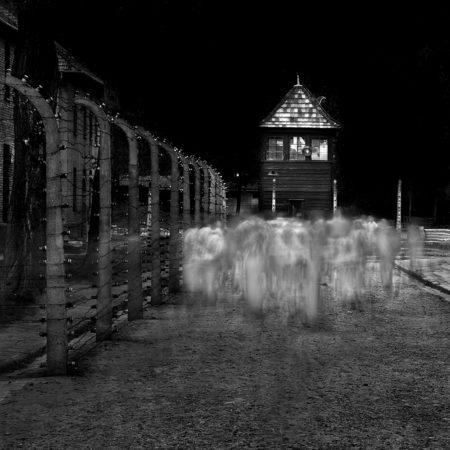
My Vision had always been there but over the years it had been buried by layers of “junk.” Each layer obscured my vision until it was lost and I doubted my creative abilities. Some of those layers were valuing other’s opinions over my own, fear of failing, imitating others and creating for recognition.
Each time I created for external rewards, each time I put accolades before personal satisfaction, each time I cared what others would think…I buried my natural creativity under another layer until it was buried and forgotten.
Interestingly I came to conclude that Vision had little to do with photography or art and had more to do with being a well-adjusted, confident and independent human being. Once I had the confidence to pursue my art on my terms, and define success for myself, I was free to pursue my Vision without fear of rejection or need for acceptance.
Something else I learned about Vision: it is not a look or a style. It is not focusing on one subject or genre and following your Vision will not make your work look all the same. Vision gives you the freedom to pursue any subject, create in any style and do anything that you want.
But finding my Vision was not the end of the journey, because now I had to follow it which was equally as hard. I am still tempted to create for recognition, to care what others think and to want to be acknowledged. It takes constant discipline to stay centered, to remember why I’m creating and to follow my definition of success.
If you could have known me before I found my Vision, you would have found a technician that doubted his creative abilities, a photographer who felt that it was wrong to “manipulate” the image, a person who sought the generally accepted definition of success: money, fame and accolades, and you would have found an insecure person who needed others to like his images in order to feel good about his work.
Thankfully, that person is gone.
While my initial search was for my Vision, what I really found was myself which allowed my natural Vision to flourish once again.
Cole
April 12, 2014


Last weekend my wife and I stopped at a garage sale that was hosted by three very old ladies who were selling some very old things (both the ladies and their items were “vintage”).
Amongst their knick knacks I spotted a leather camera bag with a post-it note that said “make offer.” I didn’t need a bag but decided to look inside.
What I saw inside made my heart flutter! It was an old 1950’s Kodak Pony camera, identical to one that I had owned as a boy.
I went over to the three women and asked “who should I make an offer to?” and the two pointed to the one in the middle. I had no idea how much the camera was worth, but I wanted it and so I said “will you take $20?”
Call 911! I thought the woman was going to have a heart attack right then and there, it was clear that she would’ve taken much less for it. But the truth is I would’ve paid a lot more because it brought back a particular childhood memory:
I was 14 years old and I had purchased a used camera just like this from Casey’s camera in Rochester, New York. I quickly put it to use on a still life that I had assembled on my mothers prized dining room table, using two eggs and a goblet.
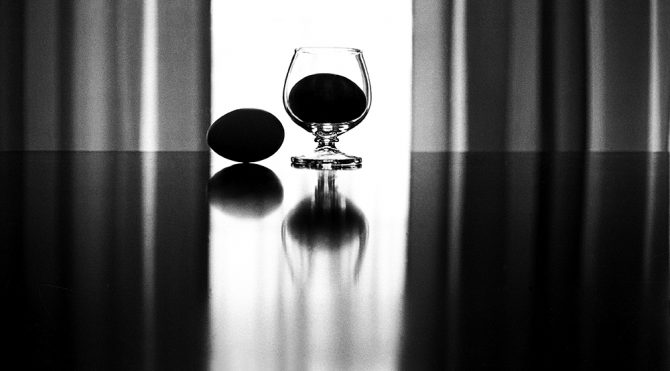
I knew what I wanted the image to look like, but there was a problem because the camera wouldn’t focus close enough. So I disassembled the lens and removed the focusing stop so that the camera would now focus very close, but how would I focus it? It was never intended to focus like this and so I took a piece of ground glass, put it on the film plane and manually focused it like a view camera. I then loaded the film back into the camera and created this image.
I jokingly tell people that “Egg in Glass” was my first fine art image, and as I have reflected on this experience from some 45 years ago, I’ve come to appreciate what this image represents to me.
It is important because I had exhibited a simple Vision and then sought the technical skills I needed to pull it off. As I look back on my photographic life, that’s how a great many of my images have come about: I had the Vision first and then developed the second.
Let me give another example:
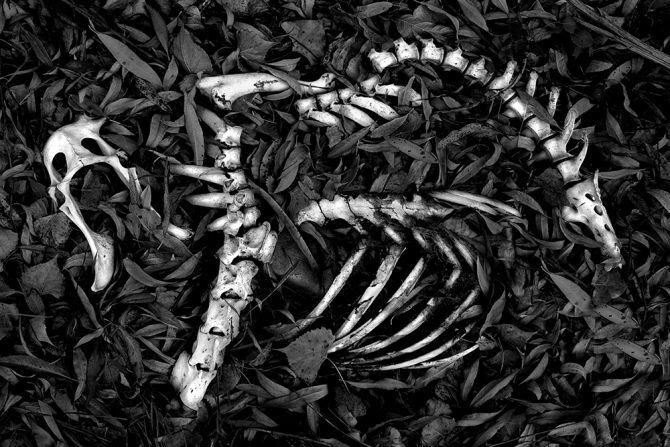
This is “Skeleton” and this is exactly how I found these bones.
Well, not exactly, here’s how the camera saw the scene:

When I stood over those bones that autumn day, I didn’t see the image the way my camera saw it, but rather the way that my Vision saw it. I knew exactly how I wanted this image to look: I wanted those bones to really stand out against dark leaves.
But the problem was that I didn’t know how I was going to do this, I had just converted to digital and I didn’t know how to use PhotoShop. So I just jumped in and starting trying things, and in the process I learned how to dodge and burn with a tablet. The Vision came first and the skills were developed as needed.
Here’s another image where I had to develop the skills on the run:

This is “Old Car Interior.” When I stuck my head in the back window of that car and looked at that wonderful old dash, I knew how I wanted it to look. But again I was faced with a technical challenge that I had no experience with: the interior was very dark and flat while the exterior was very bright and contrasty.
The dynamic range in this image would have been a challenge with film, but it was impossible with digital. I didn’t know how to go about fixing this and so I just tried something.
Here’s the original shot:
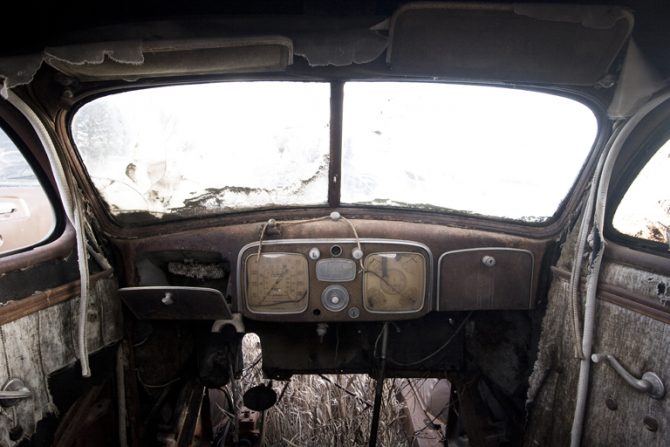
I exposed one image for the interior and one for the exterior. I then processed each one separately, cut out the window from the exterior shot and pasted it into the interior image.
Might there be better ways to have created this image? Probably, but all I care about is that it worked and I was able to create the image that I had imagined.
A final example:
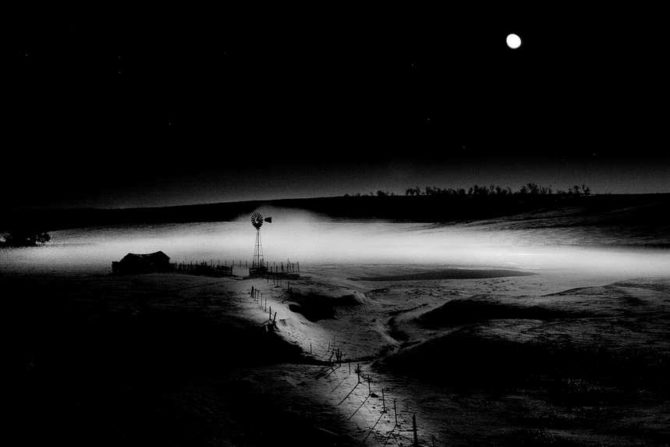
This is “Windmill in Moonlight” and this is how everyone knows this image.
But this is how the camera recorded this night scene:

When I saw this scene on that cold winter night in Nebraska, I was inspired and excited with its potential! But when I saw the RAW image, I had doubts that I could manipulate it to match my Vision. I made several attempts and failed, but I didn’t give up because I so believed that this could be a great image.
I know that my philosophy of “Vision first, skills second” runs contrary to common wisdom. There are many who believe that skills must come before the vision can be executed.
I respectfully disagree. Everything in my photographic life (both the good and the bad) has reinforced my belief in Vision first.
When skills comes first, then images are limited by what you can do. But when Vision comes first, then you are only limited by your imagination and determination.
Cole
P.S. I researched the price on that Pony 828 camera and you can buy them all day long on eBay for $10. That old lady got a great deal…but so did I!
December 27, 2013

Lone Man No. 20
When I show people my “before and after” images, their reaction tends to be: Wow, how did you do that?
This also tends to be my first reaction when I see an image that I love. Recently a friend showed me his latest creation that was both beautiful and unique, and I wanted to ask him: Benoit, how did you do that?
But I didn’t ask him.
Why not?
Because the miracle of the image was not the technique he used, but the imagination that created the image. Anyone can learn a technique, but not everyone will learn to find and follow their vision.
If I had asked and he had told me his technique…then what? Copy what he had already imagined and created? There is no joy in copying and yet I see technique after technique become the fad of the season and be copied to death.
I also see many who operate under the false belief that technique must be mastered before Vision can be executed. I emphatically reject that theory!
I believe that a great image starts with Vision and then you work hard to develop the required technique. Remember the old saying “necessity is the mother of invention?” It’s true! Once you have a vision of what you want, then you’ll be energized and driven, and you’ll learn whatever is needed to create the image.
However when I see people focusing on technique first, I find they usually never get around to putting that same energy into finding their Vision, and as a result their work is technically perfect and masterfully imitative. Technique alone misses the mark.
So instead of focusing on Photoshop and its hundreds of features or following the latest fad technique, put most of your time and energy into your Vision. I promise you that this approach will yield better images and much more satisfying results.
Technique is not the key to a great image. Vision is.
Cole
December 14, 2013
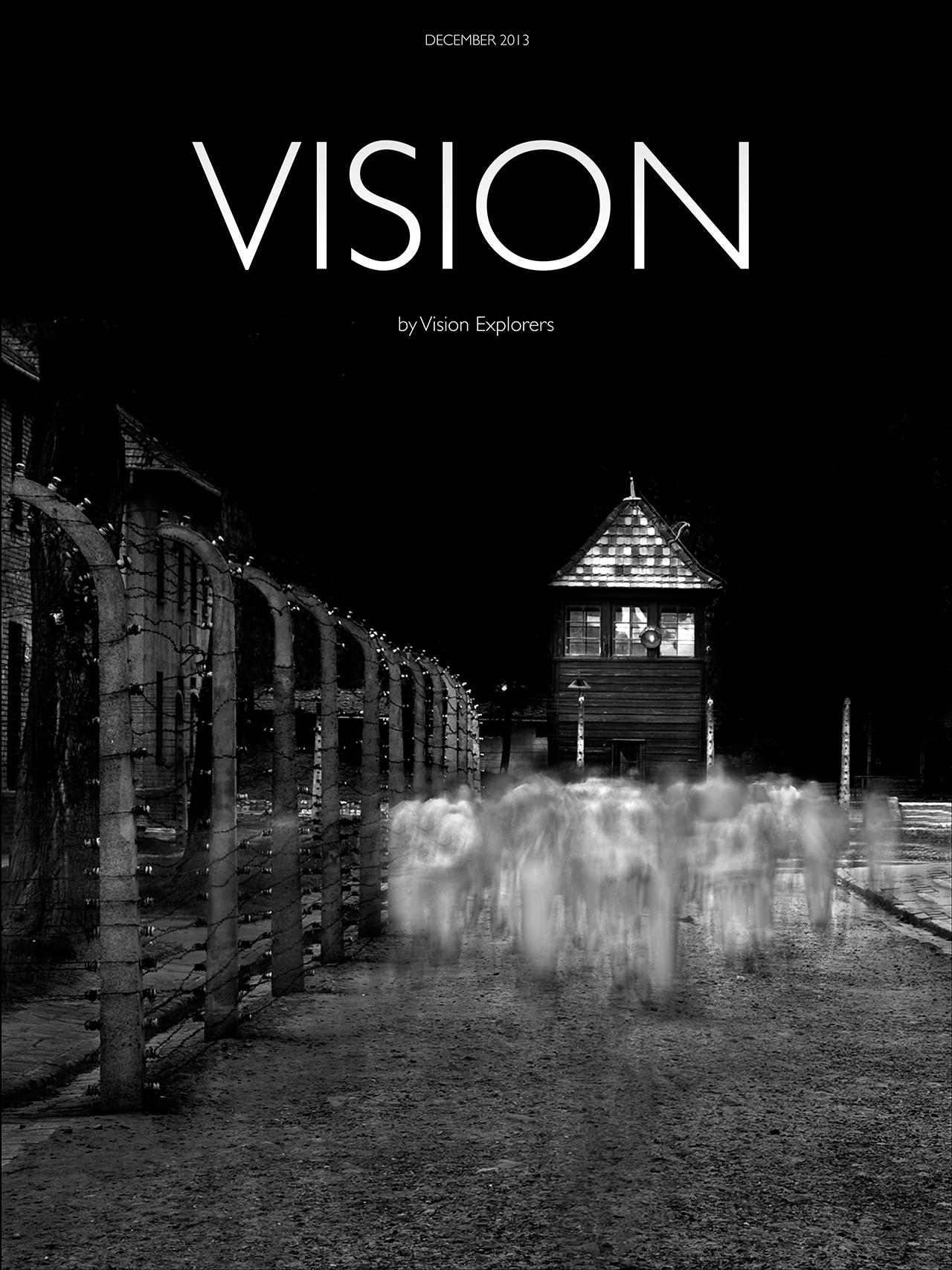
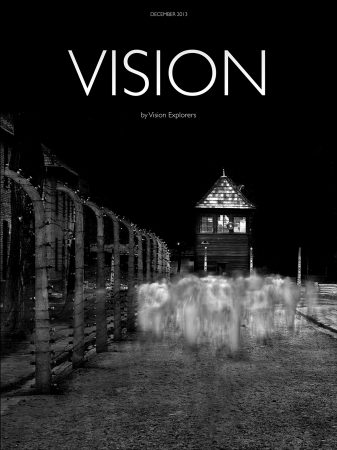
Are you familiar with the new publication Vision? It’s produced by friends of mine: Joel Tjintjelaar, Sharon Tenenbaum, Armand Djicks and Daniel Portal.
What I love about this beautifully simple magazine is that it focuses on Vision rather than equipment, processes and techniques. Here’s a great quote from their website:
“You are an artist before you are a photographer”
Because we share such similar views on vision, they asked to speak with me about the vision that created “The Ghosts of Auschwitz-Birkenau.” The interview is in the December 2013 issue.
Vision is a relevant and important publication for those who seek to improve their creative abilities. Vision is free and you can subscribe here: http://visionexplorers.com/magazine/
You can view and enlarge the individual pages of the article below, or you can View the Entire Article Here



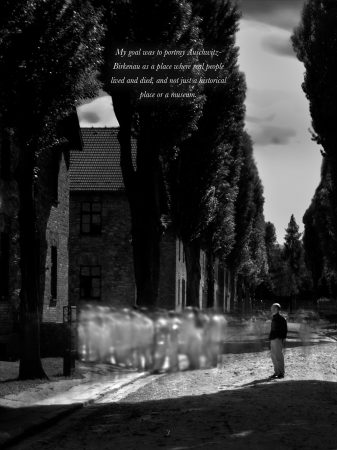
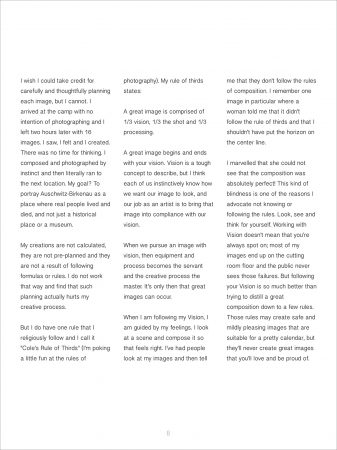
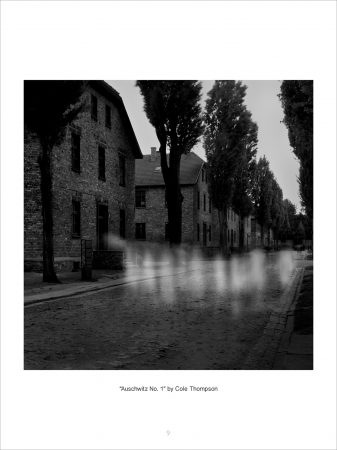

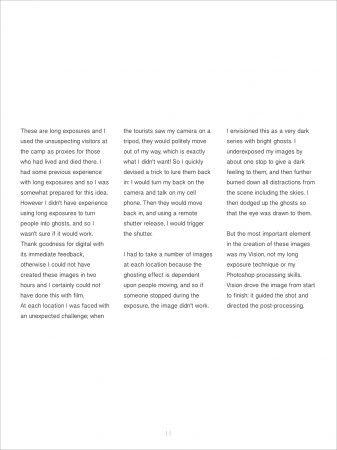
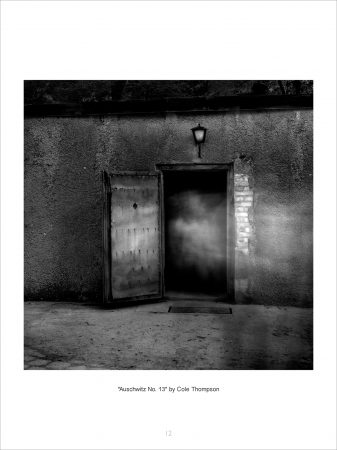
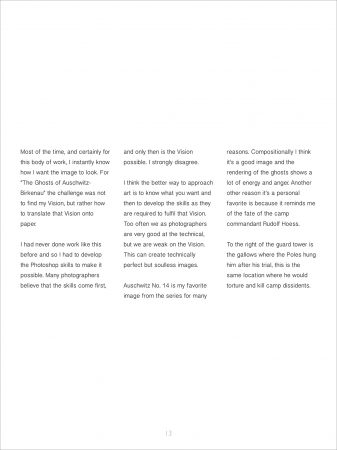

March 24, 2013
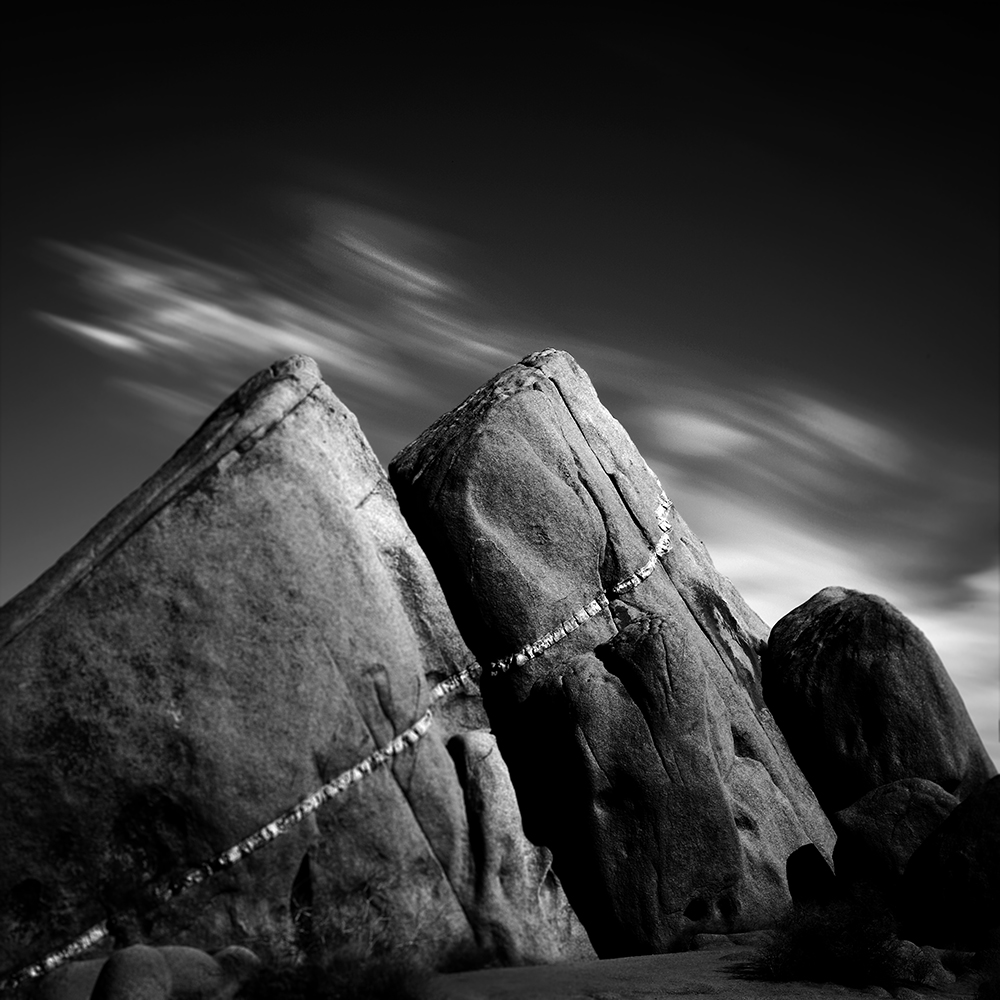

Ancient Stones No. 12
“Ancient Stones” is a portfolio that I started last year when I visited Joshua Tree for the first time in 20 years. This trip brought back many great memories because it was the site of one of my earliest dates with my wife Dyan. We camped amongst the boulders, sunned ourselves on the rocks and listened non-stop to U2’s “Joshua Tree” album. What wonderful times those were!
Ancient Stones No. 12 above is the latest image in the series and I love it! But why do I love it? Is it because it evokes wonderful memories or do I love it because it’s a good image? Evaluating your own work is very difficult, especially when it’s tied to to things like memories, praise and the opinions of others.
Recently I’ve been corresponding with several photographers on the topic of finding your own vision. I explain that one of the first steps I took was to divide my work into two piles; work that I REALLY loved and everything else. By isolating the work that I really loved, I would then try to understand what those images had in common and pursue that “vision.”
It sounds like a simple exercise, but it wasn’t for me. I actually had difficulty in separating what I thought about my work from what others thought. I noticed that if a lot of people liked one of my images, it started to affect how I felt about that image also. If one of my images won a competition, I took that as evidence that it must be a good image and that affected my opinion of it. I became so addicted to “positive feedback” that I began seeking it by producing work that I thought others would like, and in time I lost sight of what I loved.
Upon realizing this, I committed that I would never again produce images simply because others liked them and I adopted a new policy: Never Ask Others About Your Work.
To isolate myself from other’s opinions I stopped asking my friends if they liked my work. I stopped asking my mentor what what she thought of my images. I no longer approached the experts to ask their opinions and I no longer attended portfolio reviews for input. I purposely removed the clutter of other voices and focused only on what I thought.
So what happened? I once again began to understand what I loved and focused only on that, which turned out to be a key ingredient to finding my vision. I became more confident in my work and I was certainly more satisfied. Now the measure of my work and success was internal rather than external.
There was another important reason why I stopped asking others about my work; no one knows more about my vision than I do. Their advice, though generally good and well intentioned, was not coming from my point of view or vision. Increasingly I found that my vision and their advice was in conflict, and I realized that I had grown to the point where I was ready to decide for myself what my work needed.
Those of you who are familiar with my practice of “Photographic Celibacy” might recognize a reoccurring theme in my decision to “Never Ask Others About Your Work.” In both cases I am attempting to understand myself and my vision, and to pursue it without being influenced by others. In both cases I am isolating myself from the thoughts, opinions and images of others.
This idea of never asking others about your work, was echoed and reinforced by one of my favorite books, The Fountainhead by Ayn Rand. The main character is Howard Roark, an architect who is an uncompromising individualist, who defines success by being true to self and creating work that he loves. His designs are unique and he rejects the traditional designs and opinions of the experts.
However his friend and fellow architect, Peter Keating, has an opposite view of success: he seeks the approval and admiration of others. In one of my favorite scenes, Peter asks Roark what he thinks of his latest design and this is Roark’s response:
“If you want my advice, Peter,” he said at last, “you’ve made a mistake already. By asking me, by asking anyone. Never ask people, not about your work. Don’t you know what you want? How can you stand it, not to know?”
There is strength and power in knowing what you want. Finding your vision and pursuing it is a wonderful feeling that gives conviction to your work. Like Photographic Celibacy, “Never Ask Others About Your Work” may seem to run contrary to common wisdom, but I have found it to be instrumental in helping me to know what I really love and keeping me focused on my vision.
Cole
March 15, 2013
If I were to ask you to list five great locations for creating great images, what would you list? Here’s my list that might be typical:
- Yosemite
- Iceland
- Big Sur
- Japan
- The African Plains
These beautiful locations would almost guarantee a great image! Think of the great work done here: Yosemite and the iconic images of Ansel Adams. When I think of Iceland will I forever see the incredible iceberg images of Camile Seaman in my head. Or how about the work of Edward Weston in the Big Sur area or Michael Kenna’s incredible minimalistic work from Japan. And Africa…could anything be more definitive than the work of Nick Brandt?
But do you know what would happen if I were to visit these locations, say Yosemite for example? I’d be looking for the spots where Ansel created those famous images so that I could recreate them for myself. And while I might be able to create a pretty nice image, it would neither be original or be as good as Ansel’s. Remember, Ansel has already done Ansel and I’m not going to do him better!
And so it begs the question; do I need to photograph at places such as Yosemite, Big Sur or Africa in order to create great images? Can’t great images also be found in ordinary places?
Yes they can. I believe that ordinary places have just as many image opportunities as the exotic places we all dream of visiting. So let me suggest another list of locations where you can create great images:
- Your neighbor’s yard
- Your bedroom
- A greenhouse
- A hotel
- In your car
They don’t sound very exciting when compared to that first list, so let’s take a look at why I’ve chosen these ordinary and even mundane locations. First, they are very accessible: no passport needed, no time off from work and no travel expenses.
But there’s another more important advantage: Ansel and Seaman and Weston and Kenna and Brandt have not photographed there and so you don’t have their images floating around in your head. You are free to see these locations in a fresh and unique way, and you are free to be the first to create great images there!
Here are some examples of my images from those very “ordinary” locations:
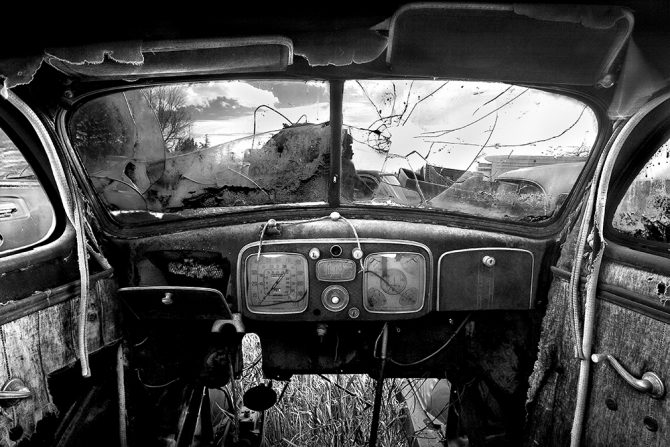
My neighbor’s yard.
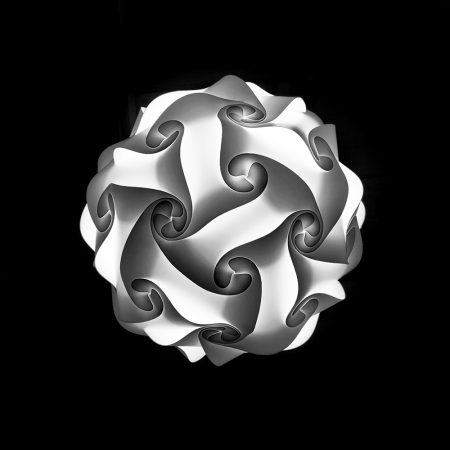
My bedroom.
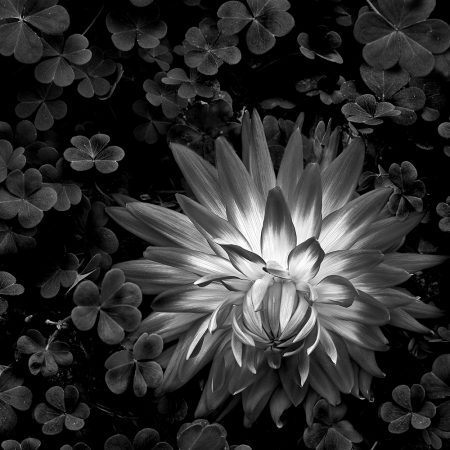
A greenhouse.
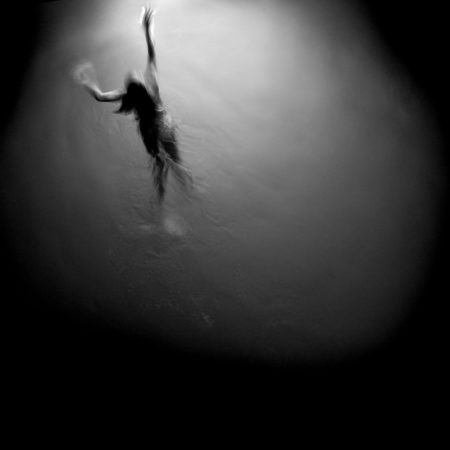
A hotel.
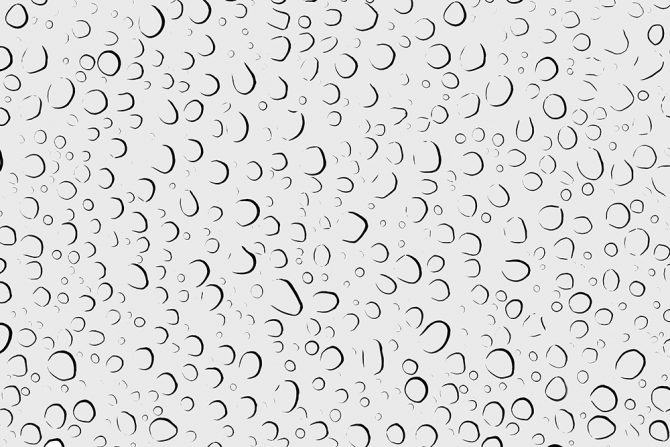
In my car.
~
Great images do not need great locations…or perhaps better said; great images can come from everyday and ordinary great locations!
Yes, I have traveled to many exciting locations around the world and and I’ve created images there that I’m proud of, but I’m just as proud of my images from these “ordinary” locations.
Here are a few more examples of images from ordinary locations:
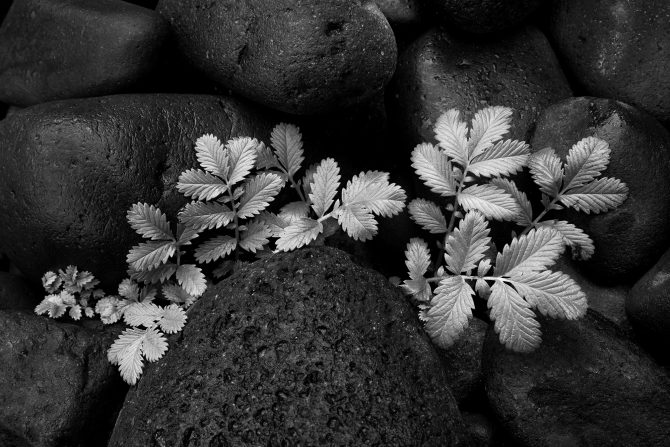
At my feet.

A friend.
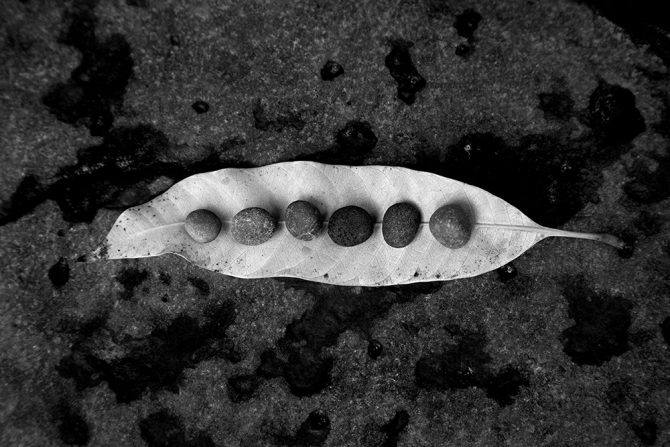
Something my daughter made.
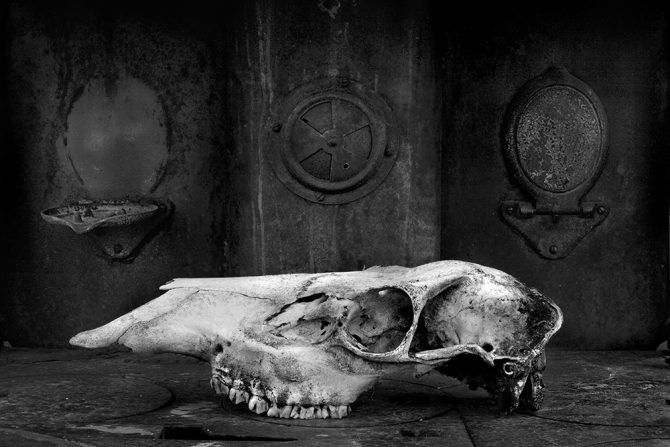
At a flea market.
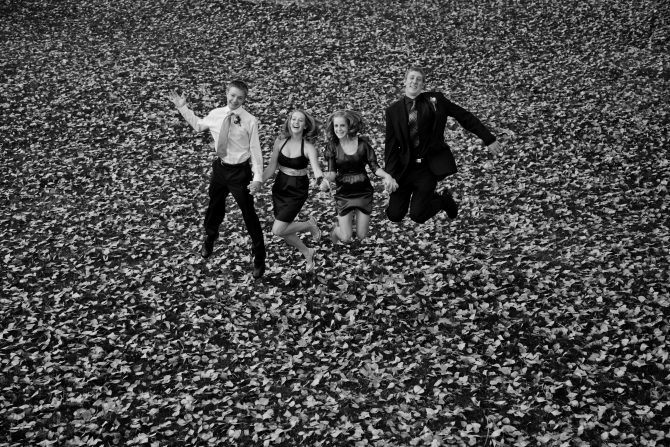
Before my son’s senior prom.
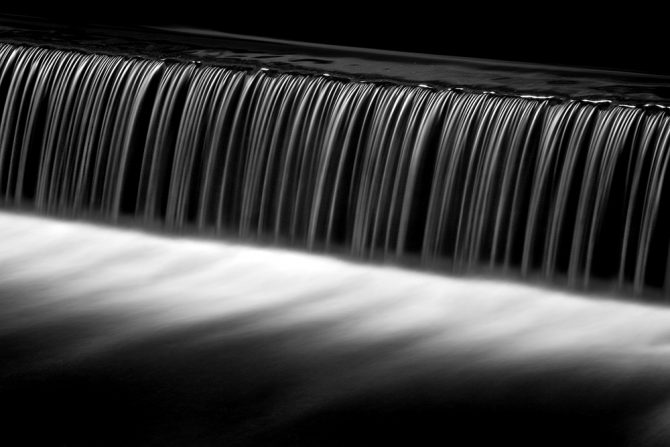
The river in my town.
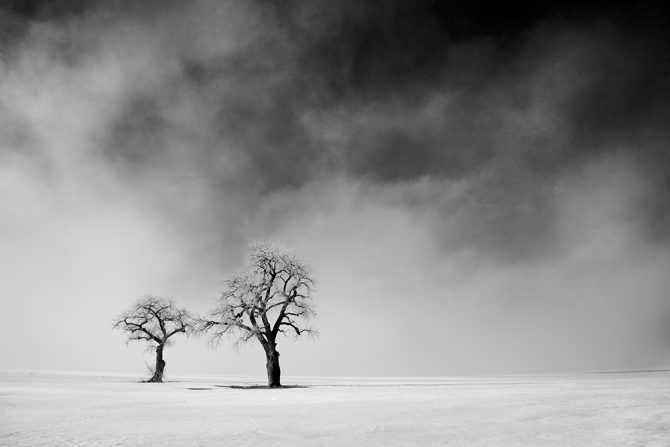
On the way to work.

My backyard.
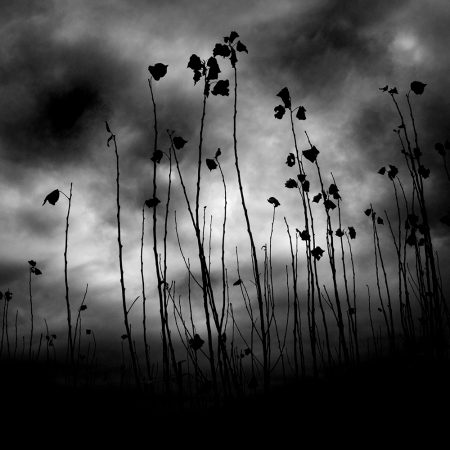
At a local tree nursery.
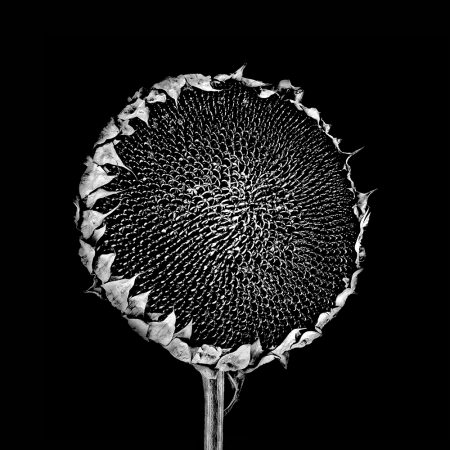
On the side of the road.
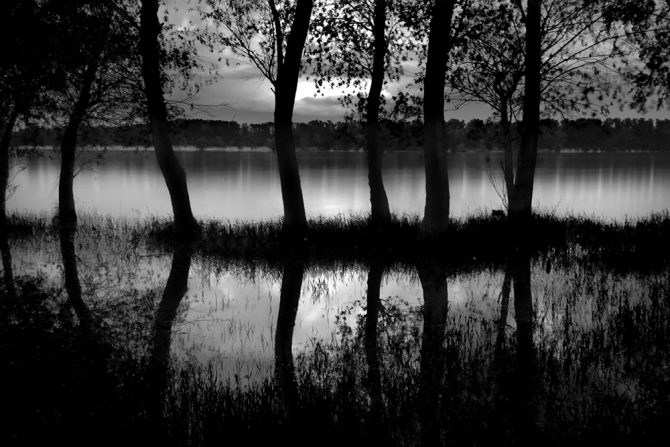
At a family get together.
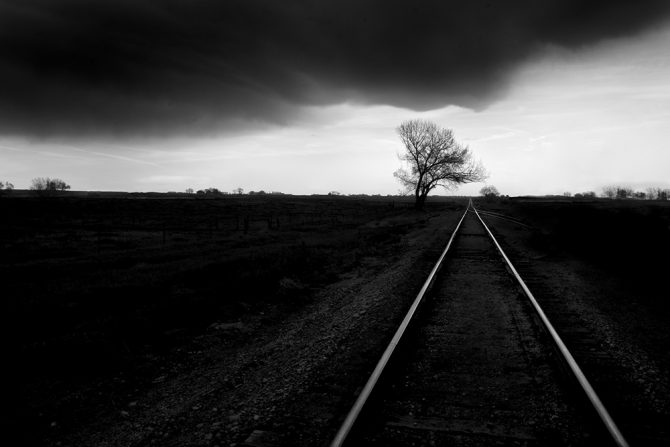
Along the railroad tracks.
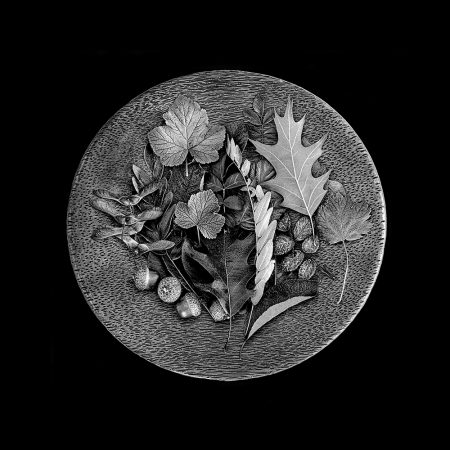
At my kitchen table.
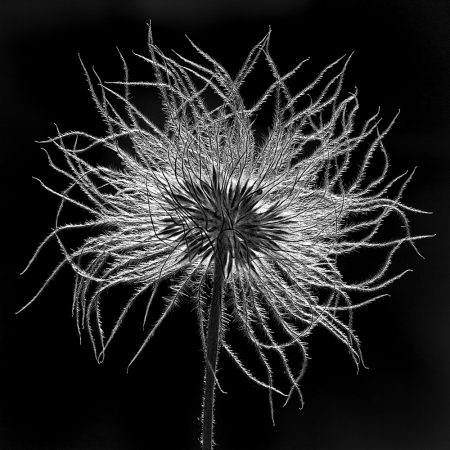
In my home office.

Along the river in my hometown.
~
The “key” to a great image is not location, but your Vision and your ability to see differently than those who have gone before you.
It’s a hard thing to do, but it is the key.
Cole
February 23, 2013
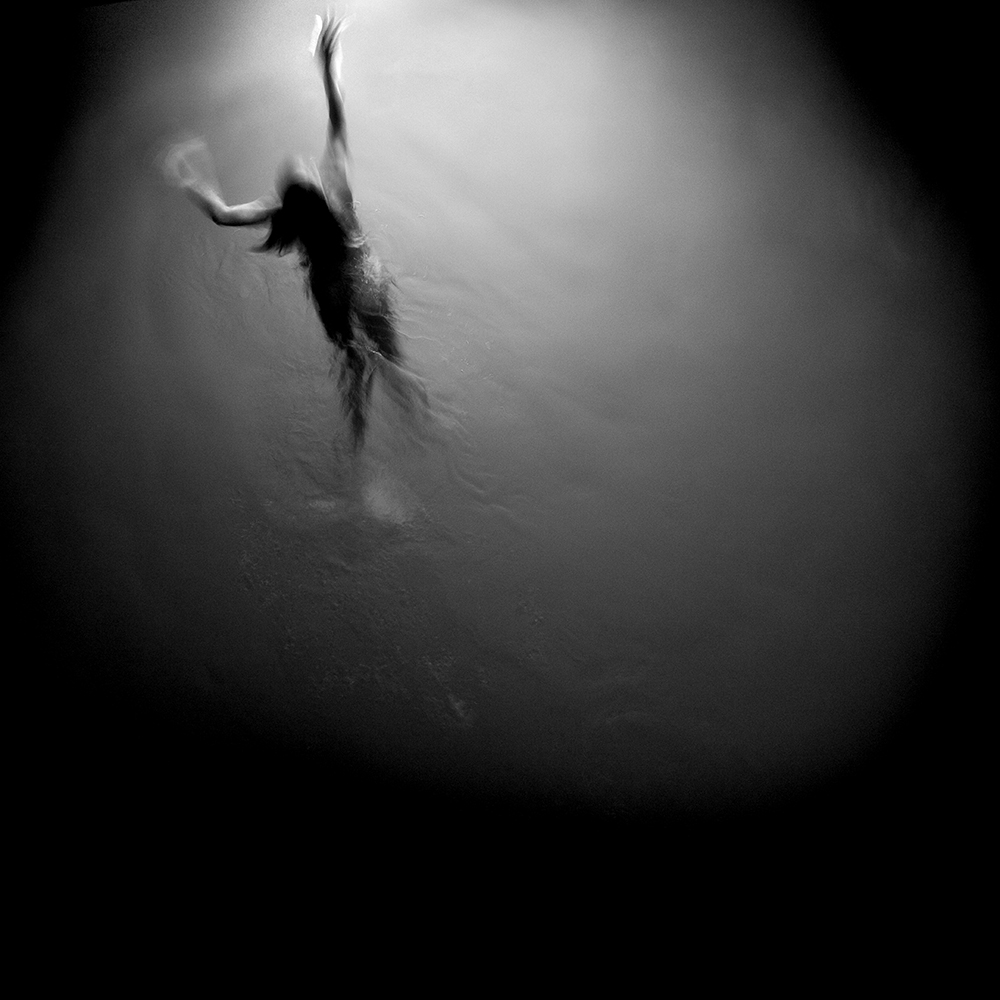
http://nlwirth.com/blog/cole-thompson-interview
Typically, I begin with an obvious question about what initially inspired you to pursue photography. I’ll ask about that later, but I’d like to begin with asking you about your overall understanding of vision and why you think it is so important.
Cole: Why is vision so important? Because it’s what makes our work unique. It’s the one ingredient that can transform a “captured photograph” into a “created image.” It’s more important than technique or an exotic location; it’s more important than a great camera or an expensive lens. With vision, you can take the simplest scene and create a masterpiece. Without vision, you can have all of the best equipment and techniques, and all you’ll end up with is a technically perfect “photograph.”
My rule of thirds states that a great image is comprised of 1/3 vision, 1/3 the shot and 1/3 processing. However, vision is the most important of these because that is what should drive both the shot and the processing. Vision transforms what we see with our physical eyes into what we see with our mind’s eye.
Sometimes we focus on the other things– equipment, technique and gadgets– because developing one’s vision is hard. Understanding and achieving vision is a nebulous concept, and it doesn’t come very easy for many of us. I used to think that I could compensate for my lack of creative ability by becoming extremely good at the technical. I studied the works of other photographers and mimicked them– specificallyAdams and Weston– in an attempt to be as good as they were. However, in the end, all I became was a great imitator. I had focused on everything except that which would make my work unique! Vision.

Nathan: What, then, is your overall vision for your work? Is it a single thing– or, perhaps, many, ever changing things?
Cole: I hope semantics and words do not get in the way of my trying to explain vision. But, for me, vision is not a thing but an understanding. My vision was always there; I didn’t create it, and I didn’t develop it. I simply discovered it and have learned to use it. But to fully use it, I must put out of my mind all stumbling blocks such as pride, envy, competition, insecurity and seeking recognition. These are barriers to vision and they impede the creative process.
I know that some could argue that there is nothing wrong with wanting recognition, or that competition is good, or that envy can motivate you to do better. I understand those arguments and for many things in life that might be true, but I don’t believe it’s true for the creative process. Anything that shifts your focus away from your vision and creative process is a distraction. If you are shooting to become famous, to win competitions or to get praise … you will not do your best work. It is only by learning to ignore those distractions and focusing completely on your creation that you can excel.
But let me also be clear that once you’ve created honest work through vision and produced something that you love, then there is nothing wrong with exhibiting, winning competitions, receiving recognition and praise for your work. Those things are the natural outcomes from following your vision, but if you only create for those goals then your work will lack conviction and power. That is my honest opinion.
I sometimes do talk about “developing” vision, but the more I live with my vision and think about it, the more I believe we actually don’t develop it. I believe we just come to understand it better and learn to follow it more. As we have new experiences in life, our vision naturally changes and so does our work. I just had someone express the thought that vision sounded limiting, and that once you find your vision your work will forever look the same. I disagree with that; our vision has nothing to do with the subjects we photograph, our style, or the techniques we use. Discovering one’s vision does not mean one’s work is doomed to be forever the same. In fact, I think that the opposite is true, that as we continue to understand our vision better and clear our minds of those distractions, our work will be ever changing. This has been my experience.
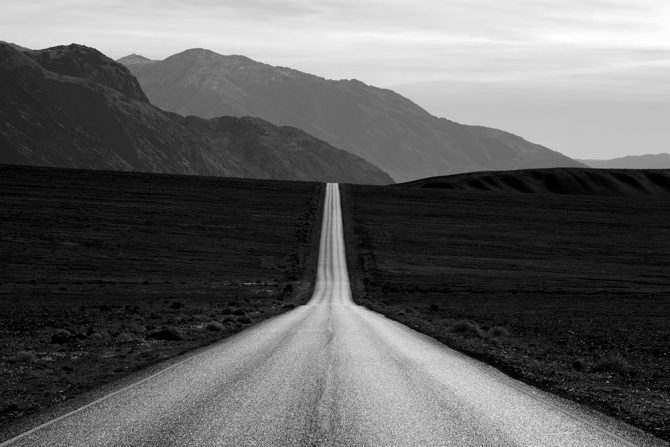
Nathan: I find your response very intriguing because it addresses, in a sense, the mystery of where creativity even comes from. It sounds like you advocate getting out of the way of such questions– and the whole concern of how to find it or cultivate it– and just doing it, just creating the work, the rest inevitably falling into place. I think many would wonder, however, if this can really only be done after you have managed to harness the basic understandings necessary for working with the mechanisms, the workings of the camera. In retrospect, do you think you arrived at your conclusions about what vision means as a result of much trial and error– and, perhaps, even pursuing recognition and acceptance and praise too early (only to find that it did not really justify and/or satisfy what you were really interested in ultimately doing with your work because it was, as you suggest above, blocking your creative impulses)?
Cole: I think you’re right. I don’t care as much about the “why” behind things. I just want to create. Talking about it and analyzing it is not my style, and, besides, I’m not certain that knowing those answers will make me a better artist. In my opinion, doing trumps analyzing.
There is no doubt that a certain technical proficiency is needed to be a photographic artist. Without those skills, we would be unable to transform our vision into an image. We could see the image in our own minds, but we would never translate it into something that others could see.
However, I think that the pendulum has swung too far and for too long in emphasizing the role of technical skills in photography. Yes … theyare important, even critically important, but couldn’t the same be said for vision? Is one really more important than the other and do the technical skills truly need to come first? I frequently hear people say that that you cannot really excel in the creative until you have developed a certain technical proficiency, but I believe that kind of thinking is backwards. As I look back on my photographic life, I now see that my emphasis on the technical was a substitute for working on the creative and that focus actually retarded my creative growth. If I could do it all over again, I’d focus on the creative right from the start and learn the technical only as my images required it.
The technical, in my opinion, is far easier to learn than the creative. I believe that’s one of the reasons we photographers focus so much on equipment and technical processes; we do it because we know how to do that. I think we are a bit uncertain how to find our vision, so we take refuge in what we can grasp: the technical. That’s what I did. Because I doubted my creative abilities, I compensated by becoming an expert technician. And that did carry me for a while, but, in the end, I was just another photographer creating technically perfect images that lacked soul. Neglected, my creative side atrophied and that further reinforced my belief that I had no creative abilities.
So bottom line, I’d encourage people to focus much more on the creative and much less on the technical. And I’d pursue the technical only in response to a creative need.

Nathan: I think one of the most talked about and, perhaps, most misunderstood question on the minds of many artists, including, of course, photographers, is: what exactly is fine art? Typically, many seem to respond that the answer is inextricably bound to the taste of the viewer, the goals of the creator, and inevitably, the opinion of the critic and the curator. Is fine art even something concrete, palatable– or even real– or is it more of a marketing tool or, perhaps, even a way for critics, sellers, and artists to label the work? I am curious about what your response to these questions might be– especially taking into consideration your understanding of vision.
Cole: I am not interested in defining “fine art,” and I don’t care how anyone else defines it either. What some expert, art critic, gallery owner, or curator calls fine art has no impact on me or what I do. They are merely one of a million opinions floating around in the ionosphere. When I look at an image, I simply know if I like it or if I don’t. Does anything else matter? Do I like an image less because someone tells me that it’s not fine art? (I’ve had that happen before).
For me, creating is doing what I want and not caring what others think. It is pursuing my own vision regardless of what others think. It’s about being so absorbed in the creative process that I’m not even aware of what others think! That moment when you realize that it’s irrelevant what others think is a wonderfully liberating feeling.
At the end of the day there is only you, your creations, and your opinion of your work. In the end, nothing else matters.
So why do some feel the need to define fine art? I’m sure one reason is simply to be able to classify work into categories so that we can communicate; for example, when I say that I create “fine art photography,” we all generally know what I’m talking about. So to some degree, we use these terms simply to be able to communicate, but I don’t spend much time worrying about a precise or universally accepted definition. I don’t have the time nor the patience.
Just so someone doesn’t think me a hypocrite, I do use the term “fine art” in my marketing. For example, I have targeted the Google search phrase “B&W Fine Art Photography” (search me, I’m number 1 out of 2,650,000 search results). So even though I have no use for defining “fine art,” I do recognize that it has a generally accepted meaning and that people use it to search for a certain type of image. I do use that to my advantage.
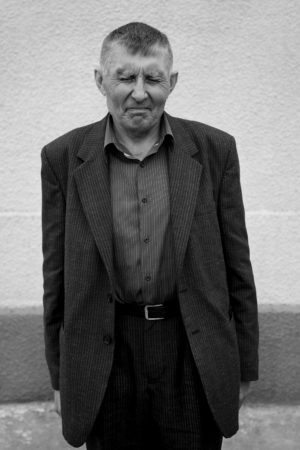
Nathan: Looking through your various projects, I see quite a few directions that you have followed— from “The Lone Man” series to the “Monoliths” series to “The Ghosts of Auschwitz-Birkenau” series and others— do you think there is any particular thread or overall theme that ties these together or are you moving from series to series individually?
Cole: There is no intentional connection between my portfolios and there is very little connection in terms of subject matter, but my work is all tied together by my vision, and that sometimes can produce a similar look between bodies of work– even though it is not intentional.
Many times over the years, people have advised me to pick one subject, focus on that and become known for that. However, that advice never sat right with me and I’ve always ignored it. I’ve been very fortunate to photograph a wide variety of subjects, and I’ve loved each project that I work on. I’d be bored if I was restricted to landscapes or any other individual subject! I believe that great work comes from passion, and pigeonholing yourself is not likely to produce much, if any, passion.
My roots are in traditional landscape photography, so you will see that influence in my portfolios. For example, my Death Valley portfolio, which appeared in the Sept/Oct 2012 issue ofLensWork, hearkens back to my roots much more than my other recent work. Then take a look at my “Ceiling Lamps” series and you’ll see a completely different subject and approach. Move onto my “Monoliths” portfolio and I’ve again changed subject, look, and style. Then there is my architectural series, “The Fountainhead,” and, well, you get the idea. My variety seems to fly in the face of the conventional wisdom to pick one subject and become known for that, but I don’t agree with that conventional wisdom.
People write to me all the time, almost sorrowful because their work is so varied. They seem to feel that this indicates a lack of concentration or discipline, which I don’t think is necessarily so. Following your vision doesn’t mean that your work focuses on the same subject or is similar looking. Vision should never be confused with a “look” or “style,” but, rather, it should be understood as an approach to creating images. While my portfolios have no common subject or theme, I do believe there is a common thread connecting them, and that thread is the way Isee and treat those subjects. I reject the concept that you must focus on one thing or develop a “look” to become successful; I would, instead, propose that the key to success is finding and following your vision.
Sometimes my work is not a “critical” success, but that is not how I measure success. I measure it by how I feel about the project and not by how others react to it. Take my portfolio “Ukrainians, With Eyes Shut,” a series of street portraits in which I asked the subjects to shut their eyes: this portfolio generated very little critical interest, but I love it, nonetheless. And, conversely, my series “The Ghosts of Auschwitz-Birkenau” was extremely well received, but that does not make me feel any differently about this body of work or make me go out and duplicate it (which people have advised me to do). There is this great quote that I’ve modified to sum up how I feel: what anyone else thinks about your work is none of your business.
I think my work is so varied because I don’t study other people’s work, so I’m very unaware what others are doing. This means I’m less likely to say “Why bother photographing Auschwitz? It’s been done to death and I could never do better than so-and-so, so why try?” This kind of ignorance is bliss because it allows me to photograph something without being intimidated or influenced by others work.

Nathan: I have to talk to you about your photography celibacy, your decision to avoid looking at what others do with their photography so that you are not indirectly influenced by it or discouraged from pursuing a theme or subject matter that interests you because someone else has done it. How far do you take this? I know, from previous interviews that you have given that you have great admiration for Michael Kenna and Alexy Titarenko (two of my most favorite photographers). Do you still check in from time to time to enjoy their latest work? I’ll have to confess and say that while I most certainly understand your reasoning behind this, I personally could not sacrifice the pleasure of witnessing the ongoing “conversation” and “evolution” that has been happening since the beginning of photography. In other words, for me, a significant part of my enjoyment of photography is the work of others. I can easily guess that your photography celibacy is often met with a challenge from other photographers. I’d love to hear more about your thoughts on this.
Cole: I learned photography by reading and by studying the work of the great masters. As a boy, I spent hours a day looking at images, analyzing them, and trying to decide what I loved about them and why. It was such a huge part of my life that it might seem that photographic celibacy would be a difficult thing for me to undertake.
So why take the “vow of celibacy?” Well, because at some point, I transitioned from photographer to artist and my desire to uniquely create became the most important thing in my life, even more important than enjoying great photography. It’s really not a sacrifice for me because I’m so focused on my creative process that I don’t miss it.
Do I peek at Kenna’s or Titarenko’s work from time to time? No. The only work I look at now is the occasional friend’s images.
Why do I continue this practice after almost five years? Let me illustrate: not long ago I saw an image of three telephone poles entitled “Three Crosses” by Brian Kosoff. The image just floored me and I purchased it. But something else occurred; I immediately found myself thinking “where can I find telephone poles like that?” I had to consciously stop myself and remind myself of my goal! Perhaps it’s just me, but when I see a great image my mind immediately starts thinking about how I can imitate the shot or recreate the look. So now I just avoid that altogether.
There are many like you, who understand why I do this but you choose a different path, and I respect that. And there are a few who argue adamantly against my practice because they generally feel that art builds upon that which has come before, and so to progress you must be aware of what has come before.
Another variation of that argument is that you must study great art to be able to create great art. However, I just don’t buy the argument. How can filling your mind with other’s images help you to be more creative or unique? It has the exact opposite effect on me! Original thinking is hard to do, and while I have not completely achieved that yet, I’m determined to try.
I think the best defense I’ve heard for Photographic Celibacy is that it’s a useful tool at a certain point in a person’s creative development. And once that tool has served its purpose, you move on and find another. Certainly I don’t argue that I’ll be celibate for the rest of my life, but for now I find the practice useful in helping me to see more uniquely so that I can further develop my vision.
There is something else that I have found equally important in developing my vision, and that’s learning to not care what others think of my work. To create for oneself and not for the praise of others can bring great power and conviction to your work. I’m not saying that I don’t enjoy exhibiting and being published. I really do, but that’s no longer the reason why I create. That’s now an extra benefit of creating.
Edward Weston has always been a role model for me in this area. Here is my favorite Weston story as told by Ansel Adams:
“After dinner, Albert (Bender) asked Edward to show his prints. They were the first work of such serious quality I had ever seen, but surprisingly I did not immediately understand or even like them; I thought them hard and mannered. Edward never gave the impression that he expected anyone to like his work. His prints were what they were. He gave no explanations; in creating them his obligation to the viewer was completed.”
It is very hard to put out of your mind what others will think of your work, but it really is quite liberating. Ironically I’ve also found that, in pleasing myself, my work has become more pleasing to others.
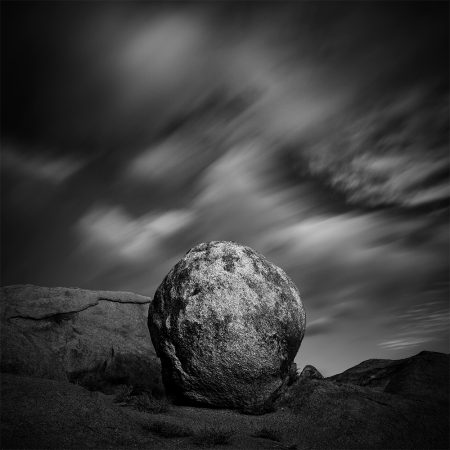
Nathan: Do you think it is necessary for an artist to always remain fresh, unique, and on the cutting edge (whatever that actually even means)? For example, some might say that choosing to paint in a similar style to (or be influenced by) the great Dutch Masters– or the wonderful Hudson River School painters of sublime landscapes– would not be following the mandate that art must always progress, always change, always seek to say something new. I strongly feel that, by definition of the very act of the individual creating something in his or her own voice, that someone who does work in a style of the past– or any similar subject matter already covered by others– is still creating something unique and fresh because, by definition, it cannot be the same as the work that inspired it (the work being inextricably bound to the vision of its creator).
Cole: I’ll be honest Nathan: I’ve never studied art, so I cannot speak intelligently or with any perspective other than my own. I work hard to not think of my work in relation to what others are doing. I do not compare it in order to judge whether it is new, fresh, or unique. I do not care if it is cutting edge in someone else’s opinion; that type of thinking is not productive and would drive me crazy. I am completely serious when I tell you that I could care less if the most renowned art critic declared my work good or bad; it makes no difference to me.
But I do care if my work is new compared to what I have been doing, and I do care if it’s unique compared to my past work, and I do care if I think the image is good. This is all that matters to me.
Now it’s very hard to be objective about one’s own work and to answer the question “is it good?” I generally find that I love 100% of my images when I view them in the field, and about 50% of them when I look at them on the computer, about 10% of them when I do my first-pass processing, and about 1% of them when I look at them a couple of days later and finally about .25% of them when I view them a few weeks later. I do find that time helps give me a more objective and realistic perspective of my work.
Nathan: So let’s shift gears a bit and focus on some of your particular series/portfolios. I’d love to hear a little more about the vision or, if applicable, thinking behind some of your series. Specifically, “The Lone Man,” “Monoliths,” “The Ghosts of Auschwitz-Birkenau,” “Dunes of Nude,” “Harbinger,” and “Ceiling Lamps.”
Cole: Each of my portfolios have come about spontaneously, suddenly, and without planning. When I see something, it excites me and I pursue it. How could life be any simpler or better than that? For a long time, I’ve kept a list of ideas, projects that I hope to pursue, but the truth is that I’ve never started a single one of them! I still keep the list, and I still think they’re good ideas, but I’ve never gotten excited enough to start one of them.
I typically complete my portfolios very quickly; many have been completed in days and weeks while some others have dragged on for a couple of years. This brings to mind a misconception that I had most of my life and one that I think others have: that a “serious” project will take years to complete. I always thought that the longer a project took, the better it must be. However, I no longer believe that. I don’t think there’s necessarily a correlation between how long a project takes and how good it is. For example, “The Ghosts of Auschwitz-Birkenau”portfolio was completed in less than two hours.
So how long, then, should a project take? It takes as long as it takes.

The Ghosts of Auschwitz-Birkenau: I was visiting my son, who was serving in the Peace Corps in Ukraine, and because I’m part Polish we decided to see Krakow. As we planned our activities, the family decided that they wanted to visit the concentration camps. I didn’t want to visit there because sad places make me sad, and while my wife loves a good cry, I tend to avoid discomfort! However the majority ruled and so off we went.
I had my equipment with me but decided not to photograph because I thought it might be sacrilegious. The tour started inside a building where we saw the documentation that was kept on each prisoner. We saw the infamous piles of shoes, glasses, hair and etc. We were about ten minutes into the tour when I started feeling claustrophobic and found it difficult to breathe. I signaled to the family that I was going outside to seek relief, and once outside I did feel a bit better. However, as I began to slowly walk, I looked down at my feet and began to wonder who had walked in these same footsteps before me, and what had been their fate? With each step I could not shake that question: who had walked here before me and now were dead? Then I wondered, perhaps metaphorically, if their spirits still walked here. And then the idea hit me; I must photograph the spirits of the dead who still walked the camps.
I had been working with long exposures for some time, so I was technically prepared. I had even used long exposures to create two recent images with people in them; “The Angel Gabriel” and “Two Kimonos,” so I understood a bit about creating ghosts. Armed with a little experience, an idea, and some inspiration, I started to work. I would use long exposures to photograph the other visitors at the camps and to turn them into ghosts. These unsuspecting tourists would stand in proxy for the spirits who had died there. Our tour bus was to leave in less than one hour and so I had to work quickly. I literally ran from shot to shot to complete these images.

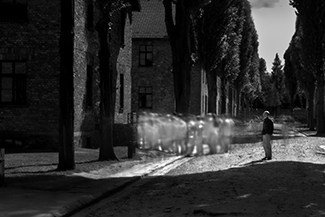
One of the largest challenges was surreptitiously photographing the other tourists. When they saw my camera and tripod pointed at a scene, they politely held back and didn’t enter the area, which, ironically, was exactly what I wanted! Fortunately, I had encountered this challenge before when I was photographing in Tokyo, so I had developed some simple techniques to trick people. I’d turn my back, act like I was on the phone and when they wandered back in I would use a remote shutter release to take the picture.
To create the ghosts, I used 10 to 30 second exposures, and I had to take about ten shots to get a single one that worked, which consumed precious minutes as I raced against the clock and the departing bus. In the end, the bus tried to leave, but my family protested and my wife dragged me back to the bus. In that short time at Auschwitz, I was able to create twelve images and then another three at Birkenau, our next stop. These were the fifteen most important images in my photographic life thus far, and if I never create any better than this, I’ll be happy with this accomplishment. Often the shot was ruined if someone stopped moving during my long exposure because this person would then be recorded as a mortal instead of a ghost. In only one of my images do I purposely leave a “mortal” in the scene, and it’s been interesting to watch people interpret what that means. I have my own interpretation, but I enjoy hearing what others think– and I’ve heard a number of very interesting interpretations.
View the complete “The Ghosts of Auschwitz-Birkenau” series here.


The Lone Man: I was shooting long exposures at one of my favorite dive spots inLaguna Beach when a group of tide poolers walked into my scene. While I was waiting for them to leave, I decided to take a test shot so that I would have my exposure all set when they left. I recorded a 30 second exposure and when I looked at the image, I was surprised to see that one man had been perfectly recorded because he had stood perfectly still for the 30 seconds. As I looked at him, I noticed something very familiar about his stance; I had seen this attitude before. I realized that what I was seeing was the look that comes over people as they stand on the “edge of the world” and look out into the infinite expanse of ocean. They become still, contemplative, pensive, and thoughtful. And now that I had consciously noticed this, I began to see it in people everywhere which inspired me to create “The Lone Man” series. Here is my artist statement for the project:

Something unusual happens when a person stands on the edge of the world and stares outward. They become very still and you can almost see their thoughts as they ponder things much greater than self:
Where did I come from?
What is my purpose?
What does it all mean?
What is beyond the beyond?
Do I make a difference?
Is there more?
At that moment they are The Lone Man, alone with their questions and thoughts about life, the universe and beyond. People are affected by this time of meditation and often vow to make changes in their lives. But this moment is short lived as these weighty thoughts are replaced with more immediate concerns:
Should I eat at McDonalds or Burger King and should I try that new green milkshake?
View the complete “The Lone Man” series here.
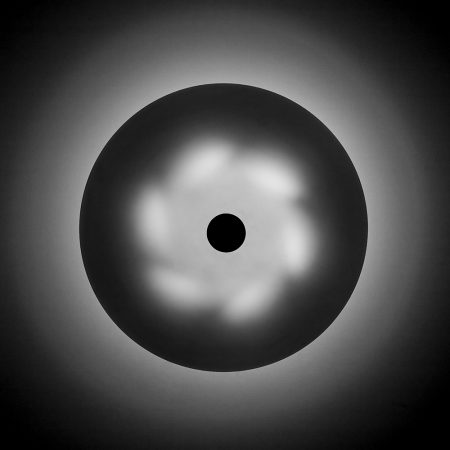
Ceiling Lamps: I was standing in a hotel lobby in Akron, Ohio, waiting to check out, when I happened to look up. What I saw was a ceiling lamp that looked fantastic when viewed from directly below. It really didn’t look like a ceiling lamp to me at all!
I pushed all the lobby furniture out of the way and lay on my back to get a better perspective (which triggered offers of CPR, mouth-to-mouth, and calls to 911). This is the first ceiling lamp I created and from there it was all great fun to seek out these lamps and photograph them– all from the same perspective and style.
This was a fun, whimsical project, and I had a great time creating it. Once you become attuned to something, you begin to see it everywhere, and that’s what happened to me with this project. Someone once told me that I’d probably never win any critical acclaim for this project, and that’s okay. That’s not why I created it.

View the complete “Ceiling Lamps” series here.

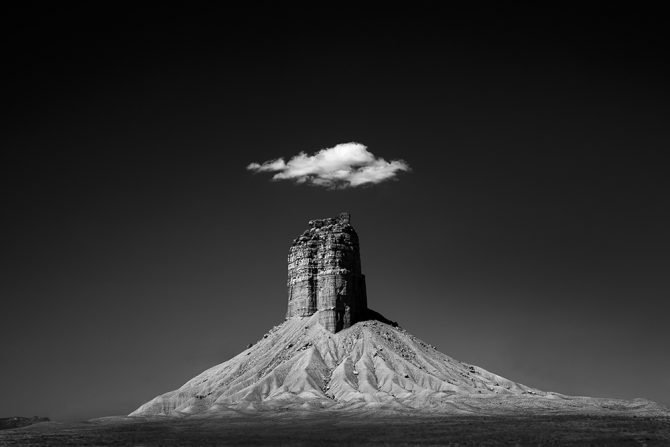
Harbinger: “Harbinger” was a single spontaneous image that I never thought would lead to a portfolio. I was photographing some mud hills in Utah,where it was over 100 degrees and my teenage son was doing the “are you almost done?” routine (if you have children, you understand). A parent can only take so much of that, so I finished up, and, as we were heading back to the car, I saw this solitary cloud moving rapidly across the sky. In an instant, I could tell by its trajectory that this cloud was going to pass over those beautifully symmetrical mud hills that I had been photographing and I wanted that image! I ran back up the hill, set up my camera and tripod in mere seconds … and got off this one shot.
I named it “Harbinger” because it seemed to me that this one little cloud was a harbinger of things to come. I absolutely loved the image but instantly wrote it off as a “one hit wonder,” not because I didn’t think it was a good image, but because I thought the chances of finding another similar cloud and interesting scene were about zero. Surprisingly, I have found a few more, and I continue to work on this project as the opportunity arises. Now this is a project that will take me years and perhaps my lifetime to complete!
Recently, I added a new Harbinger image that has more than one cloud, but I feel it still fits the description of a Harbinger [note: it is the middle image below].
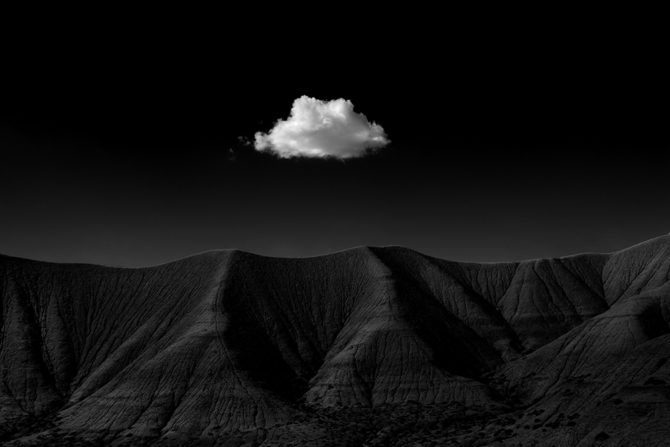
 View the complete “Harbinger” series here.
View the complete “Harbinger” series here.
Monoliths: When I first saw the Monoliths on the Bandon, Oregon beaches, I knew that I would photograph them. I have always been fascinated with what I call “Monoliths.” First, as a boy I read “Aku Aku” by Thor Heyerdahl and learned about the giant stone statues of Easter Island, and, later, I saw 2001 A Space Odyssey and was fascinated by the monolith discovered on the moon. I don’t know why Monoliths fascinated me so much, but I have always thought of them as conscious beings who have always existed. I imagined them standing there motionless for eons, observing man as he scurried about full of self importance. That always made me smile.
Each September I return to Bandon to photograph, it’s my favorite stretch along the Oregon Coast. And each year I question whether I should return because it seems as though I’ve photographed the Monoliths in every conceivable light, from every angle and in every type of weather. But I do return and I do always find new images.
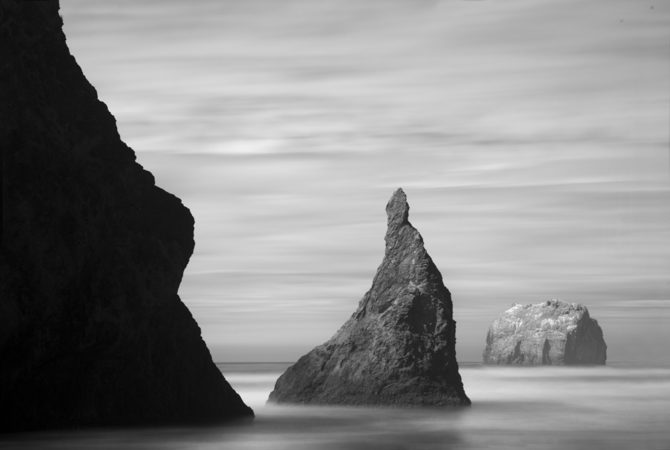
View the complete “Monoliths” series here.
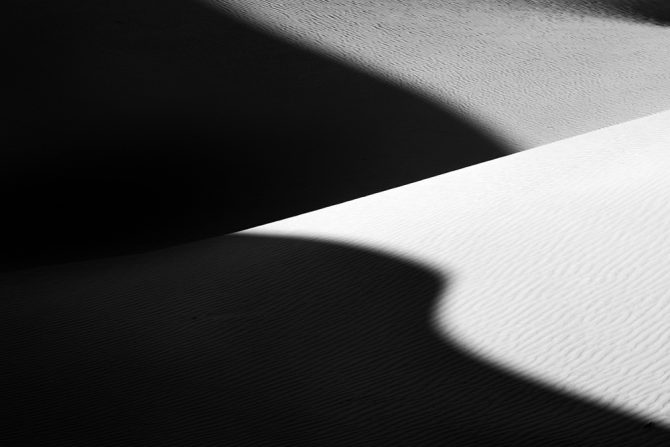
Dunes of Nude: During my trips to Bandon, I always drive down the coast to this great wind surfing spot. It has this very narrow strip of sand dunes that are compressed against the highway, and because of the very small space, it creates this miniature sand dune system. It looks just like a regular dune system except that it’s in 1/4 scale with everything miniature and compacted. This spot has always attracted me, but I never really came away with images that I liked.
However, on my last trip there, as the sun set, something really spectacular occurred. The low sun transformed the dunes into something completely different and during every minute of that last low sun, the shadows and shapes of the dunes changed. You have to work furiously because the sun is so fleeting. I became enthralled with this last 20 minutes of sunlight and this work has developed into a new project entitled “The Dunes of Nude.”
Initially I portrayed the dunes with very light tones, an unusual choice for me, but one that I thought I’d try. But after living with the images for a while, I reworked them all to be dark and “contrasty.” Sand dunes have been photographed by thousands of people and in a thousand different ways, and so part of me says that I’m unlikely to portray them uniquely. But another part of me considers that a challenge and that makes it all great fun.
The Dunes of Nude is a work in progress.
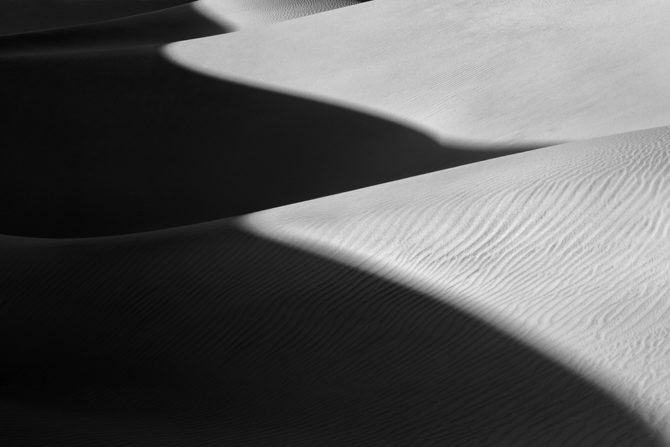

View the complete “Dunes of Nudes” series here.
Nathan: I’d like to shift gears again. One of the many parts of your talk in Palo Alto that I enjoyed the most, was your various pieces of advice, your useful chunks of wisdom, to photographers. I especially loved your advice to photographers to keep it simple, both with the purchase of the latest and greatest equipment and with processing images. I’d love to hear more about your thoughts on these matters.
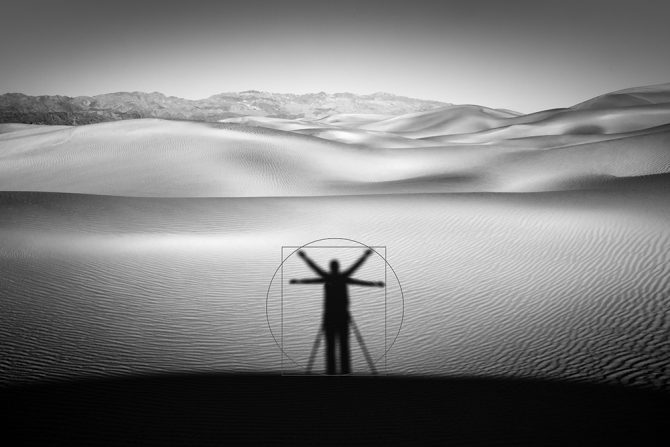
Cole: I am a recovering technophile. I’ve always loved gadgets and always needed to have the latest equipment before anyone else did. My home was gadget central, and I thought that being able to own all of this equipment somehow qualified me. However, all of this equipment and these programs required a lot of time to learn and to maintain, so much so that I had less time for actual photography. It also led to the twisted belief that a great image was dependent upon my equipment. When I saw a photograph that I admired, I would ask the photographer about the camera, the lens and settings. What was I thinking? That if I knew their settings I could create the image myself?
This attitude continued until I started discovering my vision, and, as a part of that journey, I made the commitment to stop focusing on the things that didn’t matter and to focus, instead, on the things that do. I started focusing on my vision, composition and the image. I reduced my equipment and processes to the minimum “needed” to do the job. The first benefit of this new thinking was simply that I had a simpler workflow with fewer things to go wrong.
Then something else started to happen, this philosophy of simplification started affecting my work. I noticed that I was focusing more on simple images, simple shapes, and simple concepts. Over time, I found my vision, and my work became simpler in its construction and it improved.
I am not against technology or equipment or processes; in fact, I’ll adopt any tool or process that is needed to fulfill my vision. But all of those “things” are merely tools that are servants to my vision. They are not the masters.
Nathan: What equipment (camera, lenses, and filters) and software do you use?
Cole: I use the following:
- Canon full frame cameras with a 16-35, 24-105 and 100-400 lens.
- Tripod and remote shutter release.
- A polarizer, a Singh-Ray Vari-ND filter and an assortment of fixed ND filters.
- A HoodLoupe by HoodMan
- Photoshop and typically six tools [note: see Cole’s answer to the question below for what those six tools are].
- Wacom Tablet
- Epson 7900 printer using the supplied Advanced Black and White mode
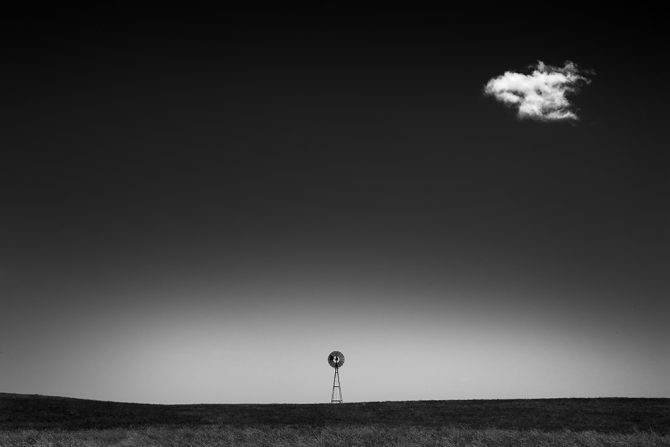
Nathan: I’d love to hear about your basic (or not so basic) approach to processing. Do you know, when in the field, how you are going to later process an image or is this discovered during the actual processing (or, perhaps, a little of both)?
Cole: My belief is that the image begins with your vision. Most of the time I know exactly how I want the final image to look and I can “see it” in my mind’s eye. I’ve become comfortable enough with my Photoshop capabilities to know that if I visualize it, I can usually make it happen. And if I don’t have the skills to make it happen, then I’ll research and learn until I have found a way to translate that vision into my image.
You do not need a lot of Photoshop knowledge to be able to create with vision; in fact, I know very little about Photoshop, but I know enough. I typically use only six tools inPhotoshop because I’ve found that I don’t need more than that. I believe that many of the “extras” that people use just add another layer of cost and complexity to the process with very little improvement in the image.
Here’s an overview of the six tools that I use:
- RAW Converter – I use Photoshop’s RAW converter to set my image to a 16 bit, 360 ppi, 10X15 TIFF file.
- B&W Conversion tool – I like Photoshop’s b&w conversion tool and play with each color channel to see how it affects the different parts of my image.
- Levels – One of the most basic secrets to a great b&w image is to have a good black and white. I use Levels to set the initial black and white point and I use the histogram to judge this, never my eyes. Throughout my processing I keep my eye on that histogram to maintain a true black and white. Something else I do while in Levels is to adjust the midtones, which can radically change the look of my image and tends to set the direction I will take it.
- Dodging and Burning – This is where I do most of my processing and where I have the most fun! I feel most at home with dodging and burning because that’s how I did things in the darkroom. However the primary difference today is that I can take my time and exercise minute control over every part of the image. I use a Wacom tablet to dodge and burn because you CANNOT do a good job with a mouse.
- Contrast Adjustment – After I have the image looking great on screen, experience teaches me that it will print flat, and so I add some contrast. A monitor uses transmitted light and a print uses reflective light, so that means it will take a lot more work to get your print to look as snappy as it does on the monitor. Contrast helps.
- Clone Tool – I use the clone tool to spot my images. Cloning is so much better than in the old days when you had to spot every single print and your mouth tasted like Spottone all day!
I also like to mention what I don’t use: I do not use any plug-ins or b&w conversion programs. I do not use a monitor calibrator. I do not use curves or layers. I do not use special RIP’s or printer drivers. I do not use special inks and I am not on a lifelong search for “the perfect paper” (life is too short). I find that most of these “extras” only add a very small amount to the image, and that generally when an image misses the mark, none of those things would have made a difference anyway.
What would benefit most people’s work is to focus on vision, work on their composition skills and then hone the technical skills that are needed.
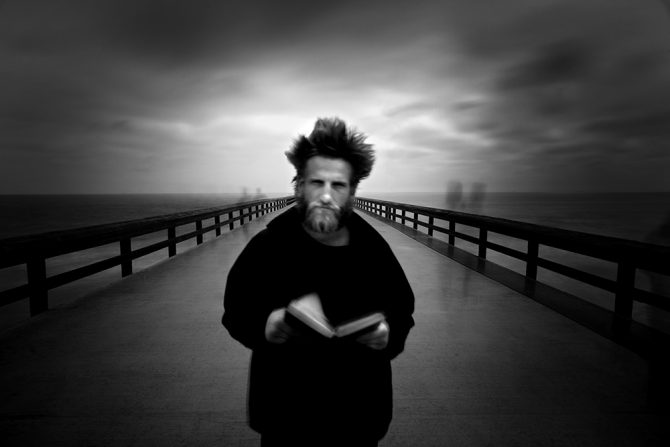
Nathan: I also love your advice about how one should not take advice and criticism from other photographers about how you should have or should not have made a particular choice when composing or processing an image.
Cole: People who give advice are generally well intentioned and oft times experienced. However their advice comes from their vision and their point of view, not yours which makes all the difference in the world. If I were to tell you how to process your images and you listened to my advice, then your images would begin to look like mine. That’s not right, they should look like your images that were created with your vision. Consequently I try very hard to not give advice to others about their images, how they should process them or how they should look.
Nor should you listen to the critics; art critics, professionals or others on photo sharing websites. Listen only to yourself and ignore the world. I remember the first image that I had created with my own vision, The Angel Gabriel. I showed it to my mentor at the time and she immediately said “Never center the image!” Something about her advice felt wrong, I had purposely centered it because that is how I had envisioned the image and how it felt. But, she was the expert and so I tried cropping it off center.
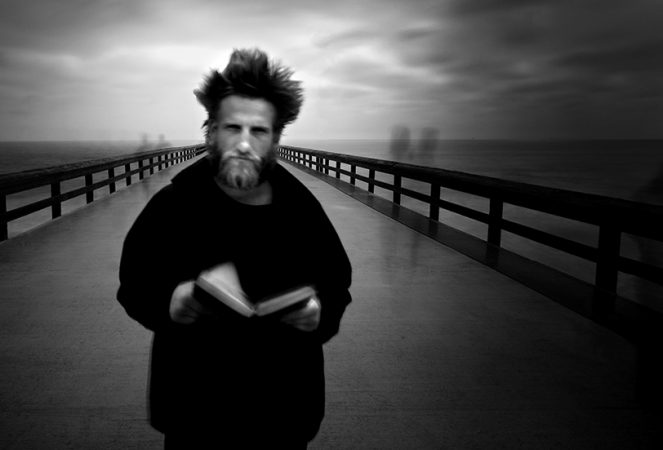
Seeing this image almost made me sick, this is not how I saw it through my Vision. This taught me to always follow my Vision, and to not to follow others advice (no matter how well-intentioned).
There is a saying that I try to live by: what others think of your images is none of your business. This requires a confidence in your vision and in your work, and when you have that confidence you’ll not need other’s advice.
One of my favorite books is The Fountainhead which is the story of Howard Roarke, an architect full of vision and self confidence. His friend Peter is a fellow architect who is insecure about his work and is constantly asking others what they think of it. At one point Peter comes to the Howard to ask his opinion about a building he has designed, here is Howard’s response:
“If you want my advice, Peter,” he said at last, “ you’ve made a mistake already. By asking me, by asking anyone. Never ask people, not about your work. Don’t you know what you want? How can you stand it, not to know?”
Now this vision and confidence does not come overnight, but it is my goal and I am constantly striving to reach that level of independence.
Nathan: Do you have any general advice for aspiring photographers?
Cole: My advice will be pretty predictable:
- Don’t listen to other’s advice (anyone see the irony here?)
- Define success for yourself before you go seeking it.
- Focus on your vision and do not imitate others.
- Understand the role of equipment and processes, they are subservient to vision and the simplest tools can produce incredible images!
- Be honest and sincere, these qualities have much more to do with being a good artist than most people understand.
Nathan: Are there any artistic influences outside of photography that have inspired your work– for example, painters, poets, writers, films, music, etc?
Cole: Yes, several.
- The Poem Invictus – My success is not dependent upon others; “I am the master of my fate: I am the captain of my soul.”
- The music of The Beatles – it reminds me to not to keep producing the same type of work simply because it was successful, in an attempt to remain successful. Experiment, grow, change, and shake it up!
- The novel The Fountainhead – It taught me to not care what others think, to follow my own vision, to define success for myself, to be independent.
- Edward Weston – I learned from Weston to not care what others think of my work, in creating the images my obligation to the viewer is complete.
- God – I believe we all have been given unique talents and that we should develop them. I have always believed that I was destined to be a photographer and artist.
Nathan: Do you listen to music when you process your photos? If yes, what do you listen to. And does music play a significant role in your creative process?
Cole: Yes I do listen to music while I work, I have splurged and installed a nice system in my office. As we write this I’m listening to the Alan Parsons Project. My library consists of 60?s and 70?s music, Jazz, Classical and Latin.
I’m not sure if listening to music while I process my work helps or not, but I do enjoy it!
Nathan:Any last thoughts or anything you would like to add?
Cole: I know that not everyone will agree with all of my ideas. Despite how I might come across, I am not advocating that this is the “right way” or that my approach is right for everyone. This is simply what I have learned and what I now believe. So I hope that nothing I’ve said has offended someone who believes or practices differently.
Who knows, in a few years I may look back to what I’ve said here and think “what a load of horse crap!”
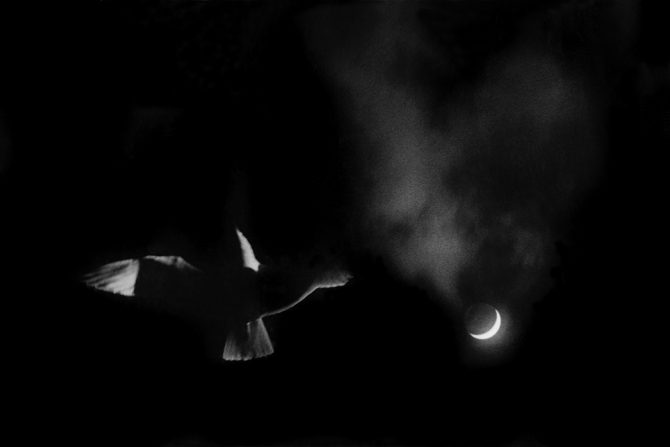
Nathan: Now that we have talked about your vision, process and other thoughts about photography, I’d like to end with the beginning and the future: when did you first become involved with photography? What first inspired you? And do you have any specific direction you would like to take your work in the coming years? I’ll also take this moment to thank you for doing this, Cole. It’s been a pleasure to read your responses. I look forward to seeing where you take your work in the days, months and years to come.
Cole: You’ve always been so kind and supportive of me, Nathan, thank you. I enjoyed meeting you last year in Palo Alto. In this Internet age I’ll often “know” someone for years before I ever meet them! And thank you for asking me to talk with you about these things, I always enjoy expressing my thoughts because this process helps me refine my beliefs.
I discovered photography at age 14 and immediately knew that I was destined to be a photographer. I was out hiking with a friend in Rochester, NY when we came across an old ruin. My friend told me that the home had once been owned by George Eastman, the father of Kodak and in many ways the father of modern photography. This piqued my interest and so I checked out Eastman’s biography from the school library. I was fascinated by the story of photography and before I had finished the book, before I had taken a picture or watched a print come up in the darkroom, I knew that I would be a photographer. I felt destined.
I know that sounds silly and perhaps presumptuous, but it is honestly how I felt and have continued to feel throughout my life. This feeling of destiny started a 10 year intensive journey of personal study and self-education. I am self taught, I’ve never taken a photography class or workshop in my life. I literally spent every waking moment either reading and learning technical processes, working in the darkroom or studying the images of the great masters of photography. I was drawn to the work of Ansel Adams, Edward Weston, Paul Strand, Wynn Bullock, Paul Caponigro, Minor White, Imogen Cunningham and others. I noticed that I was drawn to a particular type of image, dark images and contrasty images. When I’d see an image that struck me, I’d get this chill that would run down my spine. I wanted so badly to be able to create images like that and I worked hard to learn to do that.
Over the years my goals have changed and will probably continue to develop. Instead of wanting to be a photographer, I wanted to become an artist who used photography. Instead of documenting, I wanted to create. Instead of copying others, I wanted to find my own vision. Instead of being famous, I wanted to please myself.
What direction do I want to go in the future? I want to continue to try and see uniquely, to find joy in creating, and to combine my desire to see the world with my desire to create art
In so many ways I feel I am the luckiest person in the world.
Explore More of Cole’s Photography: website | blog | newsletter | emai
All images on this page– unless otherwise noted– are protected by copyright and may not be used for any purpose without Cole Thompson‘s permission.
The text of this interview is also protected by copyright and may not be used without the permission of Nathan Wirth or Cole Thompson.
December 3, 2012
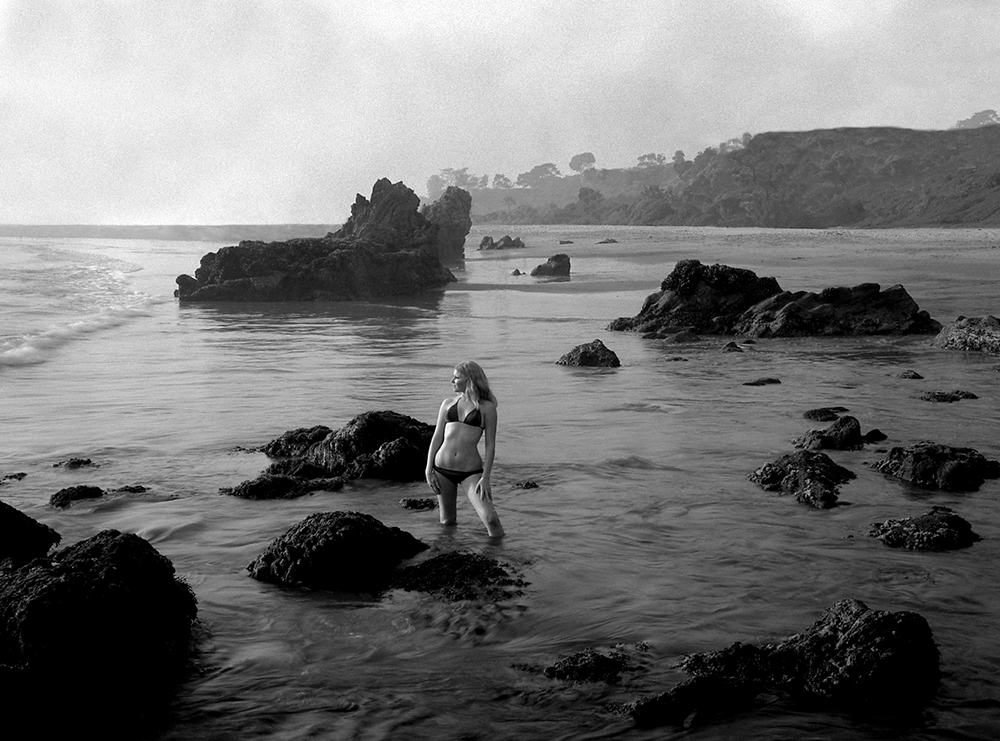

Story Number One:
I was 16 years old and living in Anaheim California. I had this idea for an image, a gull flying against a clouded moon, but I couldn’t find a way to create the image with a single shot. So I decided to combine two images, not as a double exposure captured in-camera, but by combining two images in the darkroom. Composites are easily done in today’s digital world, but they were not easily done back in 1970. Back in the “old days” I would sandwich the two negatives together in the enlarger and project them as a single image.
The first image was taken at night in the local K-Mart parking lot. I took a series of shots with clouds floating past the moon. I had this idea (vision) in my head of what the final image would look like and so I placed the moon and clouds on the right and left room for the sea gull on the left. The shot of the sea gull was taken later during the daytime in my high school parking lot, I shot a series of gulls looking straight up. Working from memory of where I had placed the moon and cloud in the frame, I positioned the gull on the left.
After I processed the negatives, I had to find two images that would work together, not just in terms of composition but also exposure. Getting a good print with this method is a challenge since you have two negatives that may have different printing needs, but you must print them together as one.
I named the image “Gull and Moon” and while I loved the composition, I was never able to get the blacks that I envisioned, the print was very muddy.

Story Number Two:
I was new to Loara High School and had joined the Yearbook staff as a photographer. The new yearbook advisor was John Holland the photography teacher, he became and remained a friend and mentor until last year when he passed away. What was so very different about John was that he encouraged us to create fine art images for the yearbook, not just pictures of the football players, cheerleaders and cheesecake shots. This was fun (!) and we had a wonderful time creating artistic images for the yearbook including my “Shoes” (above) which was prominently featured.
Unfortunately neither John nor any of us really stopped to consider why people purchased yearbooks. It was not for fine art images but for the pictures of the football players, cheerleaders and cheesecake shots! When the yearbooks arrived and were being handed out there was a near riot as the football players angrily confronted the yearbook staff. I was a junior (and small for my age) and I remember slowly slinking out through the back of the crowd and hiding in the photography room. I made myself scarce for several days.

Story Number Three:
After high school and for 30 years after, I focused on family and career and neglected my photography. During those years we moved several times and with each move I threw out more and more old things, including much of my photography. When I returned to photography around 2004 I wanted to feature some of my earlier work on my website and I began searching for anything that might have survived.
Most of my negatives were gone and only a few prints survived, in fact only 13 remained from all those years of work. Most of these images survived only because a single print was still around, and this was the case with “Mary at Corona.” I found a single 8 x 10, poorly printed and curled up print. This has always been a special image to me and I so set about the task of restoring it.
I scanned the image and worked on it in Photoshop. I was pleasantly surprised because not only was I able to restore the image, but I was able to bring it into compliance with my original vision, something I was never able to do in the darkroom! Just tonight I was comparing the original to the restored version and it reminded me of why I love digital.
If you are interested, you can see those restored images from my early years here: https://colethompsonphotography.com/portfolios/collections/1970s/
Recounting the story behind this image reminded me of the many lessons that I learned from this experience.
- Vision is the most important ingredient of a great image.
- Yearbooks are for documentary work, not fine art photography.
- Focus on the creative early on, it’s more important than the technical which can be learned quite easily.
- Don’t throw things away when you are young, you’ll regret it later.
- If you have an image that you cannot get just right, keep working on it.
October 20, 2012
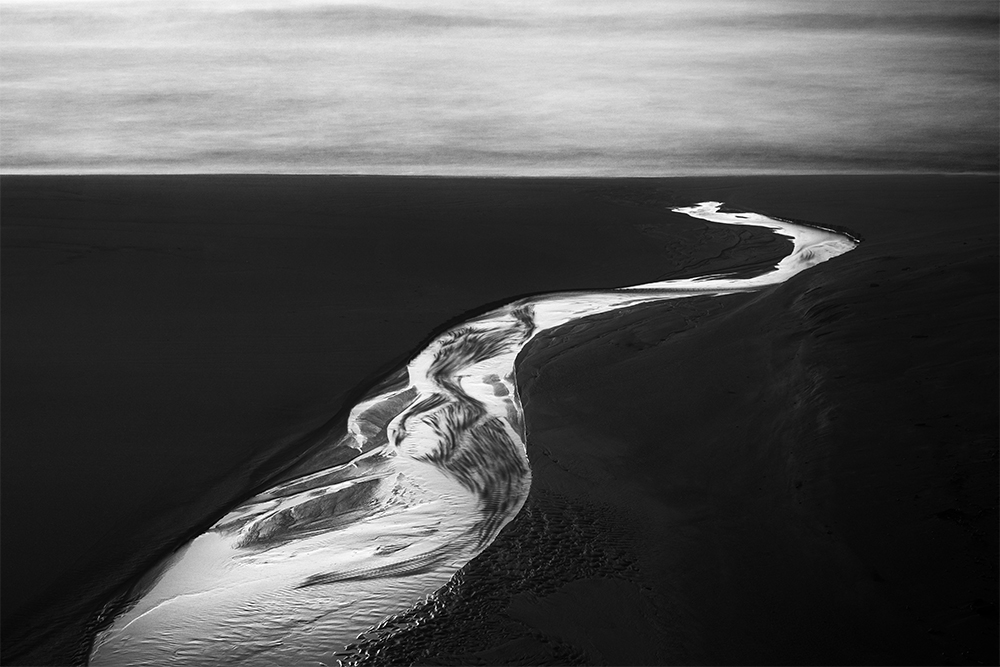
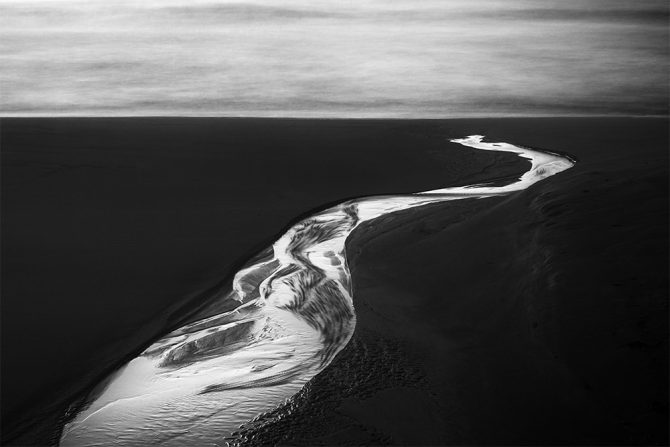
Many people assume that I’m working in film and others are surprised to learn that I photograph in color. Let me explain.
All of the work you see on my website (with the exception of the 1970’s portfolio) was created digitally. I switched to digital in 2004 after working 35 years in the darkroom. And I’ll be honest, while I have fond memories of those darkroom days, I do not miss them and I would not go back.
Why? Because my work is better since I began using digital.
I’ve often heard the assumption that digital is suitable for color but not for black and white. That has not been my experience. I’ll use whatever tools give me the results I’m looking for and I have absolutely no allegiance to the process; film is not sacred, digital is not sacred, old processes are not sacred…the only thing that is sacred to me is the image.
Perhaps more surprising to some is that I shoot all of my images in color. I’ve written that I shoot in B&W mode and so you might wonder how can that be? Shooting in B&W mode allows me to see the camera’s preview image in black and white, but I save my files in RAW which means they are really in color.
Confusing? When you shoot in RAW all of those settings such as B&W mode, sharpness, saturation, toning, color balance…are not recorded in the image. RAW means just that, it’s a raw capture without any of those tweaks and the image is recorded in color.
This is a wonderful thing! This combination of B&W mode and RAW allows me to preview the image in black and white but process from the color image. Why do that? Because I don’t want my camera or software to decide how my images should look in black and white, the black and white processing is what makes my images “mine!”
Sometimes I’ll show people the “before” color photograph to illustrate how my vision and processing has changed the image.
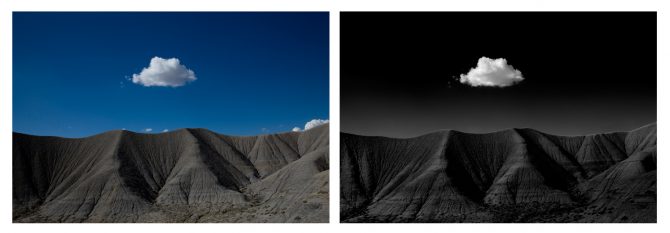
My vision drives my processing and I’ll happily use whatever tools and processes best helps me do that.
Cole


